National Geographic content straight to your inbox—sign up for our popular newsletters here
- THE BIG IDEA

Why travel should be considered an essential human activity
Travel is not rational, but it’s in our genes. Here’s why you should start planning a trip now.

In 1961, legendary National Geographic photographer Volkmar Wentzel captured two women gazing at the surf off Peggy’s Cove, Nova Scotia. This and all the other images in this story come from the National Geographic image collection.
I’ve been putting my passport to good use lately. I use it as a coaster and to level wobbly table legs. It makes an excellent cat toy.
Welcome to the pandemic of disappointments. Canceled trips, or ones never planned lest they be canceled. Family reunions, study-abroad years, lazy beach vacations. Poof. Gone. Obliterated by a tiny virus, and the long list of countries where United States passports are not welcome.
Only a third of Americans say they have traveled overnight for leisure since March, and only slightly more, 38 percent, say they are likely to do so by the end of the year, according to one report. Only a quarter of us plan on leaving home for Thanksgiving, typically the busiest travel time. The numbers paint a grim picture of our stilled lives.
It is not natural for us to be this sedentary. Travel is in our genes. For most of the time our species has existed, “we’ve lived as nomadic hunter-gatherers moving about in small bands of 150 or fewer people,” writes Christopher Ryan in Civilized to Death . This nomadic life was no accident. It was useful. “Moving to a neighboring band is always an option to avoid brewing conflict or just for a change in social scenery,” says Ryan. Robert Louis Stevenson put it more succinctly: “The great affair is to move.”
What if we can’t move, though? What if we’re unable to hunt or gather? What’s a traveler to do? There are many ways to answer that question. “Despair,” though, is not one of them.

In this aerial view from 1967, wall-to-wall seaside sunbathers relax under umbrellas or on beach towels in Ocean City, Maryland .

A 1967 fall festival in Guadalajara, Mexico , starred traditionally costumed musicians and dancers.
We are an adaptive species. We can tolerate brief periods of forced sedentariness. A dash of self-delusion helps. We’re not grounded, we tell ourselves. We’re merely between trips, like the unemployed salesman in between opportunities. We pass the days thumbing though old travel journals and Instagram feeds. We gaze at souvenirs. All this helps. For a while.
We put on brave faces. “Staycation Nation,” the cover of the current issue of Canadian Traveller magazine declares cheerfully, as if it were a choice, not a consolation.
Today, the U.S. Travel Association, the industry trade organization, is launching a national recovery campaign called “ Let’s Go There .” Backed by a coalition of businesses related to tourism—hotels, convention and visitor bureaus, airlines—the initiative’s goal is to encourage Americans to turn idle wanderlust into actual itineraries.
The travel industry is hurting. So are travelers. “I dwelled so much on my disappointment that it almost physically hurt,” Paris -based journalist Joelle Diderich told me recently, after canceling five trips last spring.
(Related: How hard has the coronavirus hit the travel industry? These charts tell us.)
My friend James Hopkins is a Buddhist living in Kathmandu . You’d think he’d thrive during the lockdown, a sort-of mandatory meditation retreat. For a while he did.
But during a recent Skype call, James looked haggard and dejected. He was growing restless, he confessed, and longed “for the old 10-countries-a-year schedule.” Nothing seemed to help, he told me. “No matter how many candles I lit, or how much incense I burned, and in spite of living in one of the most sacred places in South Asia, I just couldn’t change my habits.”
When we ended our call, I felt relieved, my grumpiness validated. It’s not me; it’s the pandemic. But I also worried. If a Buddhist in Kathmandu is going nuts, what hope do the rest of us stilled souls have?
I think hope lies in the very nature of travel. Travel entails wishful thinking. It demands a leap of faith, and of imagination, to board a plane for some faraway land, hoping, wishing, for a taste of the ineffable. Travel is one of the few activities we engage in not knowing the outcome and reveling in that uncertainty. Nothing is more forgettable than the trip that goes exactly as planned.
Related: Vintage photos of the glamour of travel

Travel is not a rational activity. It makes no sense to squeeze yourself into an alleged seat only to be hurled at frightening speed to a distant place where you don’t speak the language or know the customs. All at great expense. If we stopped to do the cost-benefit analysis, we’d never go anywhere. Yet we do.
That’s one reason why I’m bullish on travel’s future. In fact, I’d argue travel is an essential industry, an essential activity. It’s not essential the way hospitals and grocery stores are essential. Travel is essential the way books and hugs are essential. Food for the soul. Right now, we’re between courses, savoring where we’ve been, anticipating where we’ll go. Maybe it’s Zanzibar and maybe it’s the campground down the road that you’ve always wanted to visit.
(Related: Going camping this fall? Here’s how to get started.)
James Oglethorpe, a seasoned traveler, is happy to sit still for a while, and gaze at “the slow change of light and clouds on the Blue Ridge Mountains” in Virginia, where he lives. “My mind can take me the rest of the way around this world and beyond it.”
It’s not the place that is special but what we bring to it and, crucially, how we interact with it. Travel is not about the destination, or the journey. It is about stumbling across “a new way of looking at things,” as writer Henry Miller observed. We need not travel far to gain a fresh perspective.
No one knew this better than Henry David Thoreau , who lived nearly all of his too-short life in Concord, Massachusetts. There he observed Walden Pond from every conceivable vantage point: from a hilltop, on its shores, underwater. Sometimes he’d even bend over and peer through his legs, marveling at the inverted world. “From the right point of view, every storm and every drop in it is a rainbow,” he wrote.
Thoreau never tired of gazing at his beloved pond, nor have we outgrown the quiet beauty of our frumpy, analog world. If anything, the pandemic has rekindled our affection for it. We’ve seen what an atomized, digital existence looks like, and we (most of us anyway) don’t care for it. The bleachers at Chicago ’s Wrigley Field; the orchestra section at New York City ’s Lincoln Center; the alleyways of Tokyo . We miss these places. We are creatures of place, and always will be.
After the attacks of September 11, many predicted the end of air travel, or at least a dramatic reduction. Yet the airlines rebounded steadily and by 2017 flew a record four billion passengers. Briefly deprived of the miracle of flight, we appreciated it more and today tolerate the inconvenience of body scans and pat-downs for the privilege of transporting our flesh-and-bone selves to far-flung locations, where we break bread with other incarnate beings.

Landscape architects work in their Rio de Janeiro, Brazil , studio in 1955.

A tourist photographs a towering century plant in St. Thomas, U.S. Virgin Islands, in 1956.
In our rush to return to the world, we should be mindful of the impact of mass tourism on the planet. Now is the time to embrace the fundamental values of sustainable tourism and let them guide your future journeys. Go off the beaten path. Linger longer in destinations. Travel in the off-season. Connect with communities and spend your money in ways that support locals. Consider purchasing carbon offsets. And remember that the whole point of getting out there is to embrace the differences that make the world so colorful.
“One of the great benefits of travel is meeting new people and coming into contact with different points of view,” says Pauline Frommer, travel expert and radio host.
So go ahead and plan that trip. It’s good for you, scientists say . Plotting a trip is nearly as enjoyable as actually taking one. Merely thinking about a pleasurable experience is itself pleasurable. Anticipation is its own reward.
I’ve witnessed first-hand the frisson of anticipatory travel. My wife, not usually a fan of travel photography, now spends hours on Instagram, gazing longingly at photos of Alpine lodges and Balinese rice fields. “What’s going on?” I asked one day. “They’re just absolutely captivating,” she replied. “They make me remember that there is a big, beautiful world out there.”
Many of us, myself included, have taken travel for granted. We grew lazy and entitled, and that is never good. Tom Swick, a friend and travel writer, tells me he used to view travel as a given. Now, he says, “I look forward to experiencing it as a gift.”
Related Topics
- TRAVEL PHOTOGRAPHY
- VINTAGE PHOTOGRAPHY
You May Also Like

How to take perfect portrait photos

Don’t rely on social media: Here’s why you should keep a travel journal
For hungry minds.

What's new in London's museums ahead of King Charles III's Coronation

Explore 6 of history’s most infamous scams and hoaxes

We swapped baths for showers—but which one is better for you?

An antique process helps this photographer capture coastlines bound by Celtic soul
Humans really can have superpowers—scientists are studying them
- Paid Content
- Environment
- Photography
- Perpetual Planet
History & Culture
- History & Culture
- History Magazine
- Mind, Body, Wonder
- Terms of Use
- Privacy Policy
- Your US State Privacy Rights
- Children's Online Privacy Policy
- Interest-Based Ads
- About Nielsen Measurement
- Do Not Sell or Share My Personal Information
- Nat Geo Home
- Attend a Live Event
- Book a Trip
- Inspire Your Kids
- Shop Nat Geo
- Visit the D.C. Museum
- Learn About Our Impact
- Support Our Mission
- Advertise With Us
- Customer Service
- Renew Subscription
- Manage Your Subscription
- Work at Nat Geo
- Sign Up for Our Newsletters
- Contribute to Protect the Planet
Copyright © 1996-2015 National Geographic Society Copyright © 2015-2024 National Geographic Partners, LLC. All rights reserved
Exploring The Innate Wanderlust: Why Do Humans Like To Travel?
- Last updated May 28, 2024
- Difficulty Beginner
- Category Travel

Humans have an innate wanderlust, a curiosity that pushes us to explore new places and experience different cultures. From ancient times, we have embarked on journeys to discover new lands, seek adventure, and expand our horizons. But what is it about travel that captivates us? Why do we long to leave the comfort of our homes and venture into the unknown? In this essay, we will delve into the reasons behind our love for travel and explore the profound impact it has on our personal growth and development. So buckle up and get ready for an exciting journey into the fascinating world of human wanderlust!
What You'll Learn
Curiosity and the desire for new experiences, escaping routine and seeking adventure, discovering different cultures and widening perspectives, rest and relaxation away from the stresses of daily life.

Humans have an inherent curiosity that drives them to explore and experience new things. This curiosity plays a vital role in why humans like to travel. Exploring new places, immersing themselves in different cultures, and gaining new perspectives are all aspects of travel that satisfy this curiosity and desire for new experiences.
One of the main reasons why humans like to travel is the desire to explore the unknown. The world is a vast and diverse place, and travelers are constantly drawn to the excitement of discovering new destinations. Whether it's visiting a new city, exploring a different country, or venturing to a remote corner of the world, the thrill of exploring the unknown ignites our curiosity and pushes us to seek out new experiences.
Travel also allows humans to immerse themselves in different cultures and gain a deeper understanding of the world around them. By experiencing different traditions, customs, and ways of life, travelers are able to broaden their horizons and develop a more open-minded perspective. This interaction with different cultures helps us to challenge our preconceived notions and gain a greater appreciation for the diversity that exists in the world.
Another reason why humans like to travel is the opportunity to escape from the mundane and routine aspects of everyday life. Traveling allows individuals to break free from their normal routines and experience something new and exciting. Whether it's exploring ancient ruins, hiking through breathtaking landscapes, or indulging in exotic cuisines, travel offers a break from the ordinary and adds a sense of adventure to life.
Traveling also provides an opportunity for self-discovery and personal growth. Stepping outside of our comfort zones and facing new challenges and situations helps us to learn more about ourselves and our capabilities. From navigating foreign languages to overcoming travel obstacles, each new experience while traveling adds to our personal growth and development.
In addition to these reasons, travel also provides humans with the chance to create lasting memories and form meaningful connections. Whether it's bonding with fellow travelers, interacting with locals, or creating memories with loved ones, travel allows us to build connections that can last a lifetime.
In conclusion, the desire for new experiences and curiosity is a fundamental aspect of why humans like to travel. Whether it's the thrill of exploring the unknown, immersing oneself in different cultures, escaping routine, or personal growth, travel offers a wealth of opportunities to satisfy our curiosity and desire for new experiences. So, if you are seeking a new adventure, pack your bags and embark on a journey that will not only satisfy your curiosity but also enrich your life.
The Job of a Travel Consultant: Exploring the World and Helping Others Do the Same
You may want to see also
Humans are born with an inherent sense of curiosity and an appetite for adventure. We constantly seek new experiences, and one of the ways we satisfy this longing is through travel. Whether it's exploring the serene landscapes of a remote beach or immersing ourselves in the hustle and bustle of a vibrant city, traveling allows us to escape our daily routines and discover new dimensions of life. In this blog post, we will delve into the reasons why we are so drawn to travel and how it fulfills our need for adventure.
Escaping routine is one of the primary motivations behind travel. We live in a world where our lives are often consumed by work, responsibilities, and deadlines. The monotony of our daily routines can leave us feeling stuck and yearning for something more. Traveling provides us with an escape from the predictable and mundane. It allows us to break free from the constraints of our everyday lives and embark on a journey where new possibilities await.
One of the most alluring aspects of traveling is the opportunity to immerse ourselves in different cultures. When we embark on a journey to a foreign land, we get to experience a completely different way of life. We taste new cuisines, listen to unfamiliar music, and witness traditions that are unlike anything we have ever encountered. This exposure to diverse cultures broadens our perspectives and deepens our understanding of the world. It reminds us that there is so much more beyond our own little bubble and encourages us to embrace the beauty of diversity.
In addition to cultural immersion, travel also offers us the chance to challenge ourselves physically and mentally. Whether it's hiking up a mountain, trying out water sports, or navigating through the streets of an unfamiliar city, traveling pushes us out of our comfort zones. It forces us to adapt to new environments, overcome obstacles, and learn to embrace uncertainty. This sense of adventure not only provides us with thrilling experiences but also helps us grow as individuals. It teaches us resilience, self-reliance, and the importance of stepping outside our comfort zones.
Traveling also allows us to disconnect from the digital world and reconnect with ourselves and nature. In today's hyperconnected society, we are constantly bombarded with notifications, emails, and social media updates. This constant stimulation can be overwhelming and leave us feeling disconnected from ourselves and the world around us. However, when we travel, we have the opportunity to unplug and immerse ourselves in the beauty of nature. We can take long walks on the beach, hike through lush forests, or simply sit in awe of breathtaking landscapes. This connection with nature restores our sense of wonder and reminds us of the beauty and expanse of the world we live in.
In conclusion, humans are drawn to travel because it allows us to escape routine and seek adventure. It provides us with an opportunity to break free from the constraints of our everyday lives and explore new cultures, challenge ourselves, and reconnect with ourselves and nature. So, the next time you feel the wanderlust calling, don't hesitate to embark on a new adventure. Traveling will not only satisfy your curiosity and thirst for adventure but also enrich your life in ways you never thought possible.
Does Bank of America Travel Include Tolls? A Comprehensive Guide
When it comes to travel, there are countless reasons why humans are drawn to exploring new places. One of the most compelling reasons is the desire to discover different cultures and widen our perspectives.
Travel allows us to step outside of our comfort zones and experience life in a completely different way. When we immerse ourselves in a new culture, we have the opportunity to learn about their traditions, values, and customs. This firsthand experience gives us a deeper understanding and appreciation for the diversity of the world.
By encountering different cultures, we are exposed to new ways of thinking and living. This exposure challenges our preconceived notions and expands our worldview. We become more open-minded and tolerant, as we realize that there are many valid ways to exist in the world.
Additionally, encountering different cultures helps us gain a broader perspective on our own lives. When we see how others live, we can reflect on our own values and priorities. We may come to appreciate aspects of our own culture that we took for granted, or we may even adopt new practices that we find to be beneficial.
Furthermore, discovering different cultures can be a transformative experience. It can push us out of our comfort zones and force us to confront our own biases and assumptions. This self-reflection can lead to personal growth and self-discovery.
Traveling also provides unique opportunities to engage in meaningful cultural exchanges. By interacting with locals, we can learn about their way of life firsthand, and in turn, share our own experiences and perspectives. These exchanges foster mutual understanding and create connections between people from different backgrounds.
In addition to the personal benefits, discovering different cultures can also have a positive impact on society as a whole. It promotes empathy and understanding across borders, which is crucial in today's increasingly interconnected world. Through travel, we can bridge cultural gaps and foster a more inclusive and tolerant society.
Overall, the desire to discover different cultures and widen our perspectives is a major driving force behind why humans like to travel. It allows us to learn about and appreciate the diversity of the world, challenge our own assumptions, and foster connections with people from different backgrounds. So, the next time you have the opportunity to travel, embrace the chance to discover a new culture and broaden your horizons.
Discovering the Diverse Types of London Travelers
In the modern world, where we are constantly bombarded with work deadlines, social media notifications, and never-ending to-do lists, it's no wonder that more and more people are seeking a break from their daily lives. One of the most popular ways to escape the grind is by traveling. Taking a trip gives us a chance to rest and relax away from the stresses of daily life, helping us recharge our batteries and gain perspective on what truly matters.
When we travel, we remove ourselves from the daily routines and responsibilities that can weigh us down. We leave behind the worries and pressures of our jobs, the demands of our families, and the endless stream of tasks that need to be completed. This break from our normal lives allows us to disconnect from the daily grind and reconnect with ourselves.
One of the main reasons humans like to travel for rest and relaxation is that it provides an opportunity to recharge. When we are constantly on the go, our bodies and minds become fatigued, leading to decreased productivity and increased stress levels. By taking the time to relax and recharge during a trip, we give ourselves the chance to rejuvenate and return to our daily lives with renewed energy and enthusiasm.
Traveling also allows us to gain a fresh perspective on life. When we are stuck in our daily routines, it can be challenging to see beyond our immediate surroundings and problems. However, when we step out of our comfort zones and explore new places, we open ourselves up to new experiences and ideas. Whether it's witnessing the beauty of a natural wonder, immersing ourselves in a different culture, or simply taking in the sights and sounds of a new city, travel broadens our horizons and helps us see the world in a different light.
Furthermore, traveling for rest and relaxation can improve our mental and emotional well-being. When we are constantly stressed and overwhelmed, our mental and emotional health suffer. Taking a break from our daily lives and experiencing something new can provide a much-needed mental and emotional reset. Whether it's spending a day at the beach, exploring a hiking trail, or simply indulging in some self-care, travel allows us to prioritize our mental health and take care of ourselves.
Finally, traveling for rest and relaxation offers an opportunity for self-reflection and personal growth. When we are surrounded by the familiarity of our daily lives, it can be challenging to step back and evaluate our personal goals, values, and aspirations. However, when we travel, we are able to detach ourselves from the noise and distractions of our daily routines, giving us the space and time we need to reflect on our lives and make any necessary changes. Whether it's finding the courage to pursue a long-held passion, re-evaluating our priorities, or simply gaining a deeper understanding of ourselves, travel can be a transformative experience that helps us grow as individuals.
In conclusion, humans like to travel for rest and relaxation away from the stresses of daily life because it provides an opportunity to recharge, gain perspective, improve mental and emotional well-being, and promote personal growth. So if you find yourself feeling overwhelmed and in need of a break, consider planning a trip to a new destination. You'll be amazed at how a change of scenery can do wonders for your overall well-being.
Exploring the Beauty of Slovenia: A Journey through a Hidden Gem
Frequently asked questions.
Humans like to travel for various reasons. Some travel for adventure and exploration, seeking new experiences and discovering different cultures and landscapes. Others travel to escape their daily routine and find relaxation and rejuvenation in new environments. Travel also offers opportunities for personal growth, learning, and gaining new perspectives. Additionally, people travel to create memories, spend quality time with loved ones, and create a sense of fulfillment and accomplishment by ticking off destinations from their bucket list.
Traveling provides a multitude of benefits. It broadens horizons and exposes individuals to different cultures, languages, traditions, and perspectives, fostering tolerance, empathy, and a deeper understanding of the world. Travel also promotes personal growth, self-discovery, and an enhanced appreciation for one's own identity, values, and beliefs. It can also boost creativity, inspire new ideas, and provide a break from routine, reducing stress levels and enhancing overall well-being. Additionally, traveling allows individuals to create lasting memories, strengthen relationships, and experience a sense of adventure and excitement.
Traveling contributes greatly to personal development by exposing individuals to new experiences, challenges, and perspectives. It encourages adaptability, problem-solving skills, and cultural sensitivity as individuals navigate unfamiliar environments and interact with people from different backgrounds. Traveling also boosts confidence and self-esteem as one navigates through new destinations and successfully faces the various situations and obstacles that arise while traveling. Additionally, it cultivates independence, self-reliance, and resilience, as individuals learn to handle unexpected situations, step out of their comfort zone, and embrace new experiences.
Yes, travel can have a positive impact on mental health. The act of exploring new places, experiencing different cultures, and stepping out of one's comfort zone can provide a break from the stressors of daily life. Traveling allows individuals to disconnect from their routine, relax, and rejuvenate, leading to reduced levels of stress, anxiety, and depression. Being exposed to new environments, sights, and activities stimulates the brain, promotes creativity, and broadens perspectives. Traveling also offers the opportunity for self-reflection, self-discovery, and personal growth, which can contribute to improved mental well-being.

- Paolo Barresi Author

- Naim Haliti Author Editor Reviewer Traveller
It is awesome. Thank you for your feedback!
We are sorry. Plesae let us know what went wrong?
We will update our content. Thank you for your feedback!
Leave a comment
Travel photos, related posts.

Planning Your Travel: When is the Cut Off to Travel When Pregnant?
- May 15, 2024

Safeguarding Your Wealth: Practical Tips for Storing Large Amounts of Money When Traveling
- May 12, 2024

Understanding the Acceptance of Antigen Tests for Travel to Canada
- May 26, 2024

How to Prearrange an Uber from the Airport for Travel
- May 16, 2024

Is it Possible to Travel to Germany with a US Visa?
- Mar 21, 2024

The Ultimate Guide to Changing Traveler Name on United Airlines
- May 08, 2024

Millennials and Gen Zers want human connection, so they're choosing travel tours with strangers to cure their loneliness
- Intrepid Travel said young people are seeking immersive, non-traditional vacation experiences.
- Millennials share more travel similarities with Gen Z travelers than previous generations.
- Young travelers are prioritizing interest-based travel over destination-based travel.
Young people are seeking more human connection in the post-lockdown era, so they're embracing small-group travel.
Modern technology and social media apps have created a hyper-connected world, but many millennials and Gen Zers say the focus on screens has caused an epidemic of loneliness .
While New apps and local community groups are trying to address this "social distance" problem, some young people are choosing to book their vacations with strangers to find more face-to-face camaraderie.
Intrepid Travel, which organizes small-group experiences in over 100 countries, including Morocco and Sri Lanka, says it's seen a growing interest from young people in these kinds of group tours.
"They're prioritizing travel over buying houses, mortgages, and other expenses," Matt Berna, Intrepid Travel's president of the Americas, told Business Insider.
Group travel can be hit-or-miss with people. They can conjure an image of 40-plus tourists being led off a bus to an overcrowded attraction by their shouting tour guide.
But Berna said Intrepid Travel's focus on small group experiences is the opposite. The average Intrepid Travel group has 10 people.
"It allows us to travel like locals," Berna said. "We eat in small local restaurants. We stay in family-owned hotels. We typically avoid mass market tourism, hotels, or experiences."
It also allows people to form new bonds in a tight-knit setting, which young travelers crave, after the COVID-19 pandemic.
"Camaraderie in a group is so special because you make great friendships and share laughs and stories," Berna said.
Berna said these unique experiences are popular with 18 to 29-year-olds — Intrepid Travel's core audience. Experiences are designed with young travelers in mind, offering more free time to explore on their own and more active outings.
Berna said Intrepid Travel began receiving requests from people in their 30s looking for adventures off the beaten path. Millennials traditionally valued experience-driven opportunities , and that desire hasn't waned with time.
"It became clear that millennials are aging, but the style they want to travel is immersive," Berna said. "If anything, they resonated more with Gen Z than the generations above them."
American Express Travel's 2023 Global Travel Trends Report found nearly 80% of millennials and Gen Zers respondents said they want to "partake in a day in the life of locals in the destination they are visiting," pointing toward activities like visiting local cultural sites and "hole-in-the-wall" attractions.
Airbnb, owned by millennial billionaire Brian Chesky , reported in 2020 that it also found that "immersive encounters" were becoming more popular with this generation, with interest up 102% year-to-year.
Older generations, Berna said, book vacations based on destination. Older travelers tend to plan vacations around conventional tourist spots — think the Eiffel Tower in Paris — because it's popular.
However, younger travelers don't have the same sense of FOMO — or "the fear of missing out" — that their parents do. Instead, they book vacations by interest.
At Intrepid Travel, that includes cycling enthusiasts traveling to Vietnam to peddle through the local sites. Experiences based on camping, festivals, and food are also options travelers can explore.
"They want to be a trendsetter going to the next cool place," Berna said. "It will be something new you can share with your friends, so you get the bragging rights. It's a bit more adventurous instead of following the crowd."
After conducting consumer research among its more than 300,000 travelers, Intrepid Travel formally expanded the young trip age range to 35 in February.
"Intrepid identified an opportunity to better cater for an expanded age range after experiencing a rise in inquiries from travelers in their early 30s wanting to join Intrepid's young adult trips," a press release said. "The company conducted extensive consumer research which showed that most travelers aged 18 to 35 prefer to travel with those of a similar age."
As for where travelers are going, Berna said South America has emerged as a top contender, with Peru gaining traction. The country closed its tourist attractions amid political unrest from late 2022 to early 2023, but they reopened in February 2023, according to Travel Weekly .
Another top spot is South Korea, which Berna said is typically more affordable than Japan. Intrepid Travel said they saw 172% increase globally in bookings to South Korea from 2022 to 2023.
"People want to go away and have these stories. They've settled back post-pandemic into feeling life, wanting to travel again, and seeking connection," Berna said. "Not just with other travelers in groups but with destinations."
If you enjoyed this story, be sure to follow Business Insider on Microsoft Start.


Environment
Travel as a transformative experience, in a climate-challenged world, more people are flying than ever..
Posted February 9, 2023 | Reviewed by Michelle Quirk
- What Is Sensation-Seeking?
- Find a therapist near me
- The carbon cost of travel makes tourism expensive for the environment.
- Foreign travel can promote peace and harmony in the world.
- It is possible that we may yet enjoy the benefits of distant travel without the environmental degradation it brings.
The Chinese New Year brought out more travelers than before the pandemic. Even as they wake up to the climate cost of airline travel, more and more people are flying abroad. How is that possible?
If challenged, most people justify travel as a uniquely valuable experience. Either it brings us closer to important people in our lives, or it helps the inhabitants of far-flung places to understand each other better.
The Climate Costs of Distant Travel
The carbon cost of travel makes tourism expensive for the environment . Each long-distance flight increases our personal carbon footprint by about a tenth based on American data (where the average person has an annual carbon load of around 15 tons).
Tourism is not necessarily a negative for the environment. Extensive natural parks were created in Latin America that aimed to attract ecotourism, for instance. These reserves favored the resurgence of many indigenous wild animals and promoted a thriving natural habitat that draws carbon from the air.
Whatever the net climate costs of tourism may be, there are some categories of leisured people who have always traveled extensively. Their thirst for travel has not slowed down due to contemporary concern about climate change. Why not?
Long-distance travel fits in with many other aspects of elite lifestyles, from owning many vehicles to living at multiple addresses and following the annual movement patterns of jet-setters. Up to now, wealthy people were often admired for their lavish lifestyles. Their environmental recklessness will get more attention in the future given that the richest people have carbon footprints thousands of times those of average citizens.
Travel as Elite Behavior
Many wealthy people express concern about climate change. Yet, their lifestyles are in conflict with these concerns. 1 If you happen to own homes in distant places, you are almost obligated to visit them. Otherwise, what is the point of ownership? Elite lifestyles also involve seasonal rituals, whether it is skiing in the Alps or summering in Martha's Vineyard. Such rituals express elite status, and abandoning them would involve a loss of prestige. This helps explain why they are so resistant to change.
Apart from such conventional behavior, members of the elite set a trend in long-distance leisure travel that is adopted by the general public. Many aspire to travel far from home at least once a year.
If pressed for an explanation, tourists would emphasize that travel has the potential to change their lives in positive ways.
Travel as a Transforming Experience
The annual vacation in an unfamiliar place can have beneficial psychological effects. These are many and varied. By changing the environment, a person puts their regular life on hold, providing an opportunity to reset and relax.
In practice, vacations can be quite demanding, even stressful , particularly given the many problems with flight cancellations over past months. Yet, the mere experience of living in an unfamiliar society is inherently stimulating. This is particularly true if one communicates well with the local population. A traveler can return with a rich experience of how others live and an understanding of varied ways of thinking about what is important, or unimportant, in our lives. For example, residents of poor countries they visit may derive greater social support from members of their local community than is common in wealthier countries.
Foreign travel can promote peace and harmony in the world. If we get to understand people who live in very different countries, it is hard to hate them, much less support a war against them. These social benefits of travel may be intangible but they are also immeasurable.
While foreign travel can be extremely rewarding for the recipient country, as well as the traveler, this ideal is not reached by those who spend their time in the safety of gated resorts that vary little around the globe. So, how can one justify the environmental costs of travel that weigh heavily against its social benefits? In theory, it is possible that we may yet enjoy the benefits of distant travel without the environmental degradation it brings.
The Dream of Sustainable Air Travel
Green air travel may currently look like a pipe dream given that flying has a large carbon footprint. Electric planes are one possible solution although current models have limited range and are more suitable for use as local taxis rather than for international flight.
In the future, long-distance flight may be powered by hydrogen fuel that is derived using renewable energy sources (i.e., green hydrogen). When that happens, environmentalist-minded travelers can have their cake and eat it too!
1. Barber, N. (2022). The restless species: Cause and environmental consequences of human adaptive success. Portland, ME: Trudy Callaghan Publishing. https://www.amazon.com/Restless-Species-Environmental-Adaptive-Success/…

Nigel Barber, Ph.D., is an evolutionary psychologist as well as the author of Why Parents Matter and The Science of Romance , among other books.
- Find a Therapist
- Find a Treatment Center
- Find a Psychiatrist
- Find a Support Group
- Find Online Therapy
- United States
- Brooklyn, NY
- Chicago, IL
- Houston, TX
- Los Angeles, CA
- New York, NY
- Portland, OR
- San Diego, CA
- San Francisco, CA
- Seattle, WA
- Washington, DC
- Asperger's
- Bipolar Disorder
- Chronic Pain
- Eating Disorders
- Passive Aggression
- Personality
- Goal Setting
- Positive Psychology
- Stopping Smoking
- Low Sexual Desire
- Relationships
- Child Development
- Self Tests NEW
- Therapy Center
- Diagnosis Dictionary
- Types of Therapy

At any moment, someone’s aggravating behavior or our own bad luck can set us off on an emotional spiral that threatens to derail our entire day. Here’s how we can face our triggers with less reactivity so that we can get on with our lives.
- Emotional Intelligence
- Gaslighting
- Affective Forecasting
- Neuroscience
Ginger Won't Snap
Review: airbnb.com – travel like a human.
Wow, it’s not often I will find a service or product that is so cool it will kick me out of a writing slump! I am so stoked to share this article with you guys and I’m not even getting compensated for it or anything!
As a blogger with a strong bent towards personal finance I am always looking for ways to either save money or make more of it! Luckily my roomie is on the same page. One day she told me about her friend who was renting out her apartment for a month through an interesting online service and she suggested we check it out and see if it was something we could use for our extra room. So I did.
AirBnB – Air Bed & Breakfast… Get it?
So what is AirBnB ?
From their site:
Called the “Ebay for space” by Time Magazine, Airbnb is an online marketplace allowing anyone from private residents to commercial properties to rent out their extra space. The reputation-based site allows for user reviews, verification, and secure online transactions. Listings include vacation rentals, private rooms, entire apartments, bed and breakfasts, boutique hotels, castles, treehouses, and many other traditional and non-traditional accommodations.
In short, it’s a great way to rent out an extra room or space of yours in the short-term and make some cash!
So, how does it work?
If you’re a host like me, you take some nice photos of your place and write up a listing. It doesn’t cost anything to create a listing for yourself, though for each booking AirBnB takes a 3% service fee.
When someone wants to book with you they complete the booking process and you’re emailed and asked whether you would like to accept or not. If you accept, your contact details and exact location of your space are released to your guest, and you also receive their contact info. At that point you start talking to them about check-in times and whatever else you like.
If you are a guest , you do a search in the area you want and see the listings. You can send a quick email inquiry if you have a question, or you can book right away. You pay upfront to AirBnB who holds onto your payment. The money is sent to the host after the first day of your stay. This is in case you cancel or something happens. This is a great way to travel– you save a lot of money and learn about the local culture much more. Or you could, you know, rent a castle or something.
Ginger, what was your experience like?
Well, so far it’s been great! We are lucky that our apartment is in a desirable location, close to public transit, a clean & safe neighbourhood, etc. so we’ve had more booking requests than we can actually handle. I had to turn two people away last night, actually!
Since I’m an advertising person *wink wink* I wrote a really stellar ad. I think that that is one of the main reasons we’re getting so much interest. I included a lot of details and listed exactly what was included. I also posted nice, but realistic photos not only of the room, but the common spaces as well so that guests could get a feel for the apartment and us as hosts before they booked.
I know that this helped because I asked some of our guests this weekend why they chose our place over all the others out there. One reason was we have a slightly lower price, but the other was because we looked “friendly”, “normal” and “welcoming”. All good things to hear!
Good customer service is also important. We responded quickly and politely to all inquires and did a great hosting job when they got to the apartment as well.
My roommate and I compiled a list of local activities and sights for our first guests from Spain this weekend. They wanted to know more about the Toronto culture and do less of the touristy stuff. They were real travellers and wanted to go where the locals went!
This was very well-received so we’re actually going to step things up a notch and do up a beautiful digital booklet to send to our guests. It will include photos our friends have taken, the traditional tourist listings (CN Tower, ROM, etc.) as well as our “local” suggestions such as our favourite bars, restos and concert venues. My roommate is also very into the local hipster art scene so she can provide all kinds of party and gallery recos.
As we get more accustomed to being hosts, we have plans to kick things up a notch as well by offering breakfast, doing tours, etc. We really want to make a cool experience for our guests. Not only will this be kinda fun for peeps like us, but it will allow us to charge more per night and increase our profits!
A key point of the AirBnB system is the recommendations and reviews. After every booking both the host and guests review the stay. The more positive reviews you have, the better (and the more money you can charge!). You can also get friends to write recommendations about you personally; this also helps guests learn more about you and helps them make their decisions.
We are still waiting for our reviews from our 3 guests this weekend but I expect that they will be quite positive. I have also left them positive reviews. Our Spanish guests were even so sweet as to bring us a bottle of local Spanish wine to thank us! Awwww!
Additional Thoughts
I obviously think this is a really cool concept for both hosts and travellers. I like that I can make money off of my extra room and I will use this service the next time I travel.
It can be a little bit weird though. While my roommate and I enjoyed having our guests, it can be stressful having strangers in your home. We had to be there at specific times and it was mentally tiring; even with good guests.
You will always want to use your best judgment and be cautious when doing something like this. We locked away our expensive items and tried to find the balance between being at home enough, but also giving the guests their space and privacy. It is important to really think things through, establish rules and communicate those to your guests to avoid any problems.
Overall I would say that my first 2 bookings were a good experience. We will definitely be continuing as hosts and also refining our listing as well as house rules so that we’re not so frazzled the next time. I really think it is a learning experience!
If you have an adventurous personality and an extra room, I would recommend trying out AirBnB !
Have you ever traveled or hosted via a service such as AirBnB? I would love to hear your thoughts and stories in the comments!
Share this:.
- Click to share on Facebook (Opens in new window)
- Click to share on Twitter (Opens in new window)
- Click to share on Pinterest (Opens in new window)
- Click to share on Reddit (Opens in new window)
- Click to email this to a friend (Opens in new window)
4 responses to “Review: AirBnB.com – Travel Like A Human”
Wow what a great website. I love these kinds of website. I wish we had these websites for everything
SO cool. Yay for extra cash!!
Great this is something that we're looking to do when we move to Portugal; rent out a room through AirBnb so this is really helpful to me – thank you. I'm glad you're finding the experience good so far 🙂
My husband and i used Airbnb we stayed with Andrew and Marcus they were very accommodating every thing was just like it looked in the pictures the bathroom is clean daily. The sub way is close by and it's about 15 mins drive in to Manhattan.You get your own private entrance and you can purchase breakfast just around the corner(just a block or 2 away from home) and since my stay i see they have added TV and cable to make a long story short it was great value for money i would stay there my next trip
Historic Brooklyn Private Room Dekalb AVE Andrew
Best Regards Paulette and Theo
Leave a Reply Cancel reply

DOWN THE ROOTS OF HUMANKIND
Travelling back, moving forward, roots of humankind, do you ever wonder why we travel what do we really seek when we leave behind our busy lives to “disconnect”.
We live in extraordinary times, in which virtually all knowledge is within anyone’s reach, and communication between human beings at any latitude on the planet has never been more direct and immediate. We are connected as never before…but to what? And at what cost?
Trying to keep up with the ever-increasing pace of new technologies, we have lost touch with the rhythms of Nature, and consequently also with the wisdom of our ancestors, intrinsically linked to those rhythms since time immemorial.
What if Travel offered us a key to reverse this trajectory?
Imagine travelling back in time, to the ancient wellspring of wisdom that shaped humanity.
Kind Human organizes immersive experiences and expeditions aimed at rediscovering and preserving the unwritten knowledge of our ancestors, our intrinsic connection with Mother Earth and the common roots of Humanity, through deep, one-of-a-kind immersions in the ancient world.
Rewire the natural bond with mother earth, we are the regeneration, going back to the roots of civilization and humanity isn’t just a gimmick to us. we truly believe that reconnecting with the past will give us the perspective we need to envision a better future..
Even more, we think that there’s something to gain for everyone in this exchange, first and foremost for the communities that host us. It is in their interest that Kind Human exists, not the other way around.
Only by reconnecting to our past can we hope to shape a better future
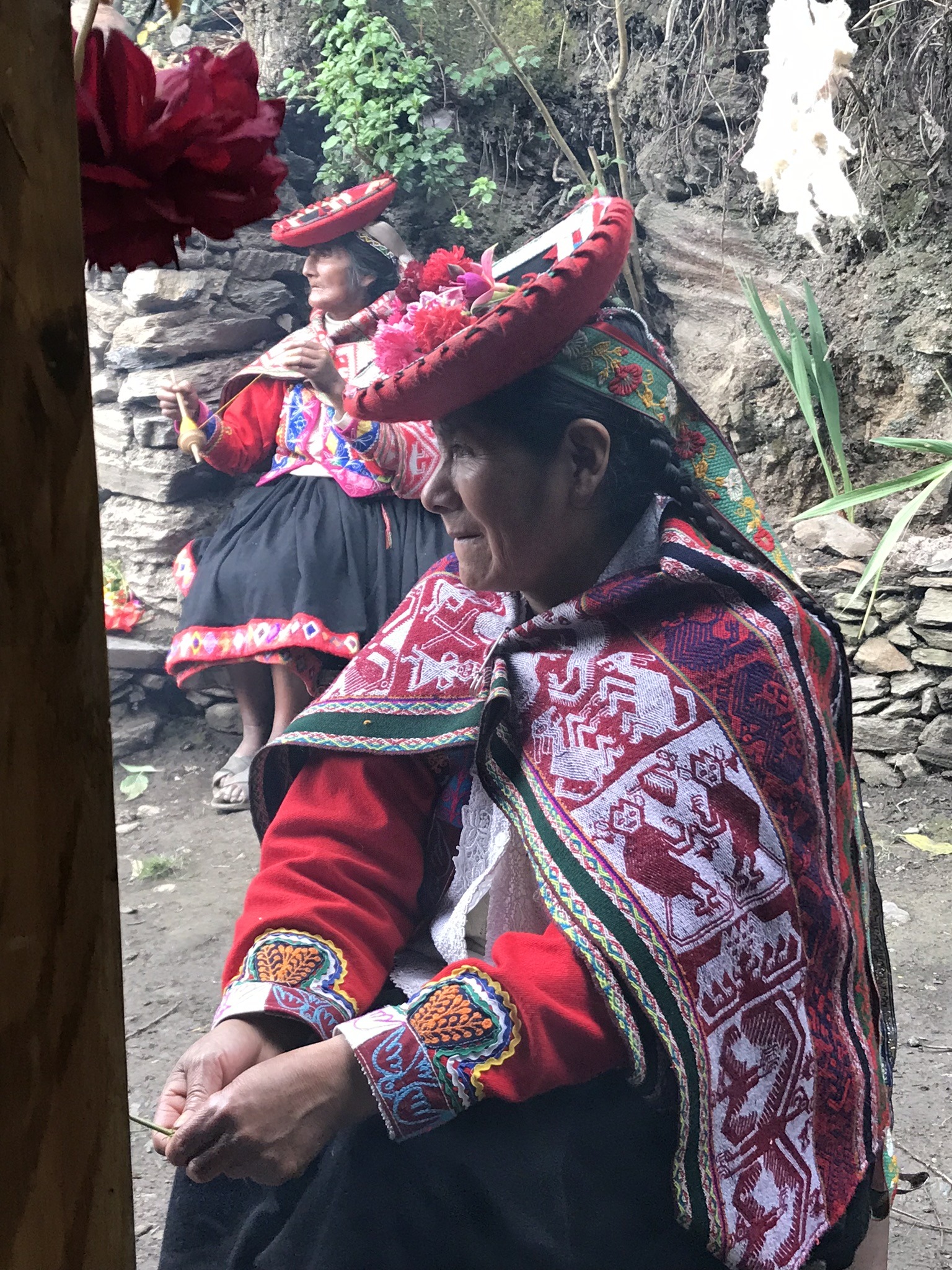
NON-TOURISTIC, IMMERSIVE TRAVEL
Kind human experiences, kind human facilitates immersive experiences in remote communities, and one-of-a-kind expeditions exploring the shared roots of humankind..
Our pilot project was born in collaboration with the people of Choquecancha, an isolated village sitting on an archaeological site in Peru’s Lares Valley, a couple of hours away from the more famous Sacred Valley and almost on the edge of the Amazon rainforest.
Here, the entire system of social relations is still run by the principle of Ayni , or reciprocity in the native language Quechua.
I never thought travel could be such a deeply transformative experience. what i gained these days is nothing you can put in words - but one thing is for sure, i will cherish it forever..
MARCO B. - kind human guest
Our official partners
Egypt, guatemala, mexico... we are working on some incredibly cool stuff., sign up to our newsletter >>>, curious about our upcoming experiences.

© 2023 Kind Human Travel • All Rights Reserved | Kind Human International LLC | Cusco, Peru | VAT – 612107772
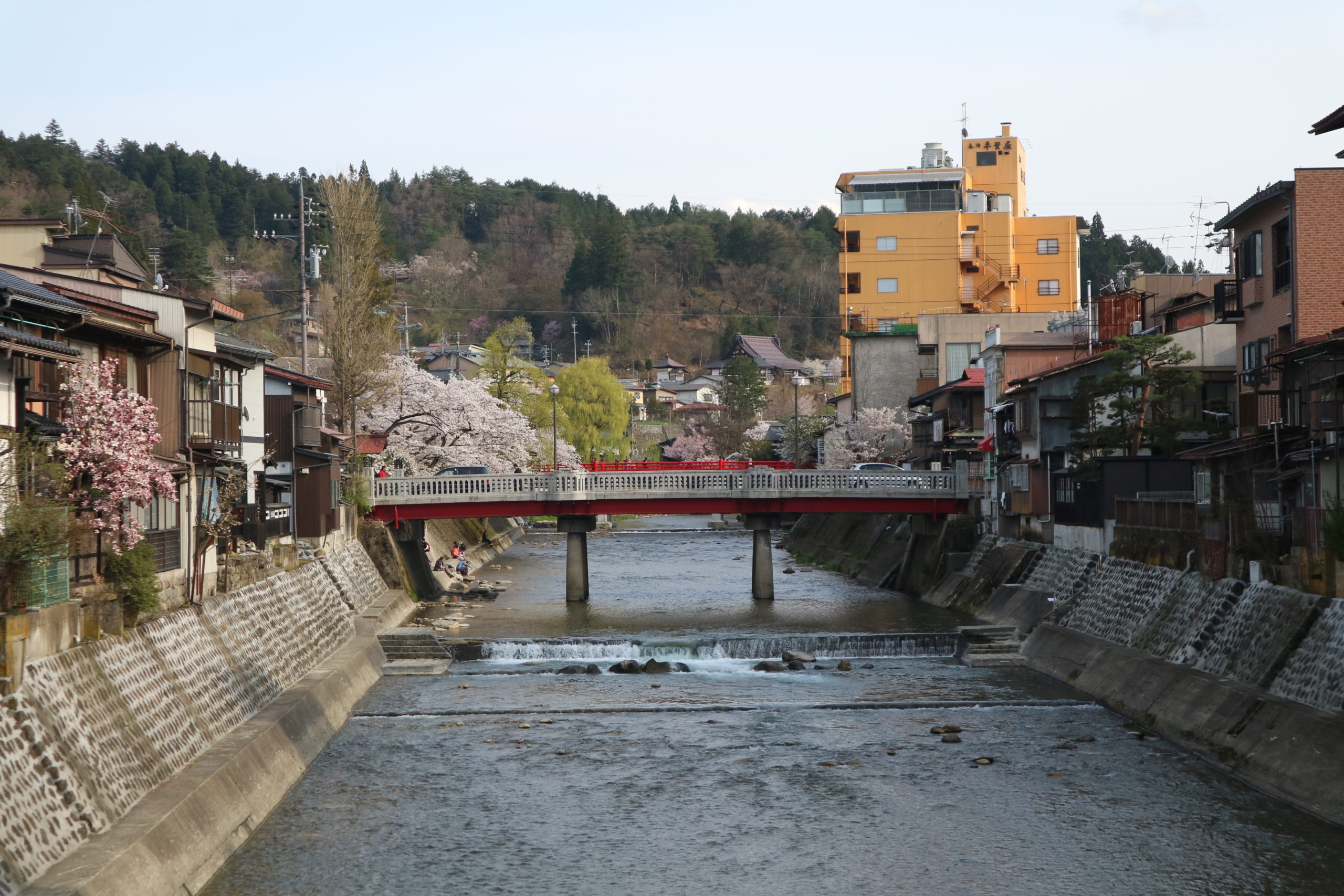
Travel Like a Human

Mountains covered with fresh green, rural landscape that reflects the contrast between green and blue, beautiful autumn leaves and snowy landscape, townscape preserving the culture of the Muromachi period called “Hida No Takumi”, vegetables grown in pure water, Hida beef, local sake. And the old-fashioned way of life that continues even now.
Hida still keeps such a nostalgic scenery of Japan here Through a trip to Hida, we aim to offer a “Travel Like a Human” experience that enriches your lives. We would like to provide an experience that allows you to feel the connection with people and the community, rather than just traveling around tourist attractions.
By pursuing what is a “Travel Like a Human” that enriches your lives, we have created an accommodation style you have never experienced before. IORI STAY offers a new luxury trip. We believe that new luxury in the next stage is “to experience extraordinary life while staying like living in the community”.
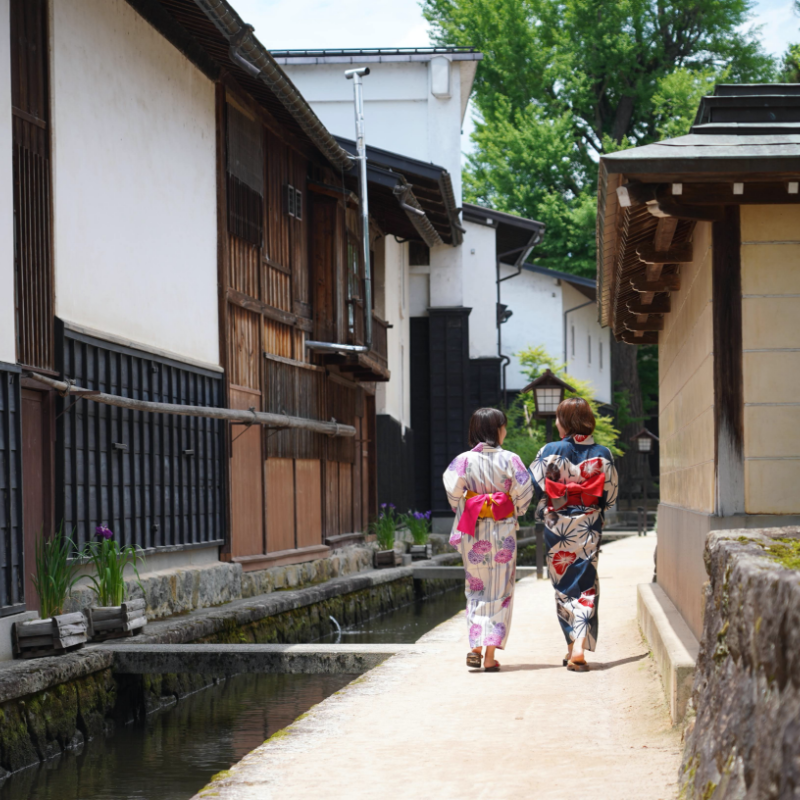
Stay in a townhouse
Traditionla Machiya in Hida/Takayama reproduced by local craftsmen which retains its former taste and gives a feeling of life inherited from its predecessors, while incorporating a modern and latest design, gives you an extraordinary luxury. As exclusive use for one group per day, you can spend a luxurious time just for you. ”

Stay like living
IORI STAY is a decentral hotel style dotted in the town. Although they are in prime location to tourist spots, they exist in harmony with the quiet and peaceful townscape where locals live. Take a walk through the streets with the smell of dinner, say hello to local school students, and enjoy the night at local restaurants loved by locals. You can experience the daily life of Hida. In addition, Breakfast made from local ingredients will be delivered to the hotel every morning from the local restaurant collaborated with us.

New hospitality
Throughout your stay from booking to check-out, all the local staff who know everything about Hida will welcome you. While we have a concierge system that can provide the necessary services when needed so that we “people” can be a part of your trip, you can also relax and enjoy your own time after check-in by taking advantage of private use of whole townhouse.We think this is the best hospitality.
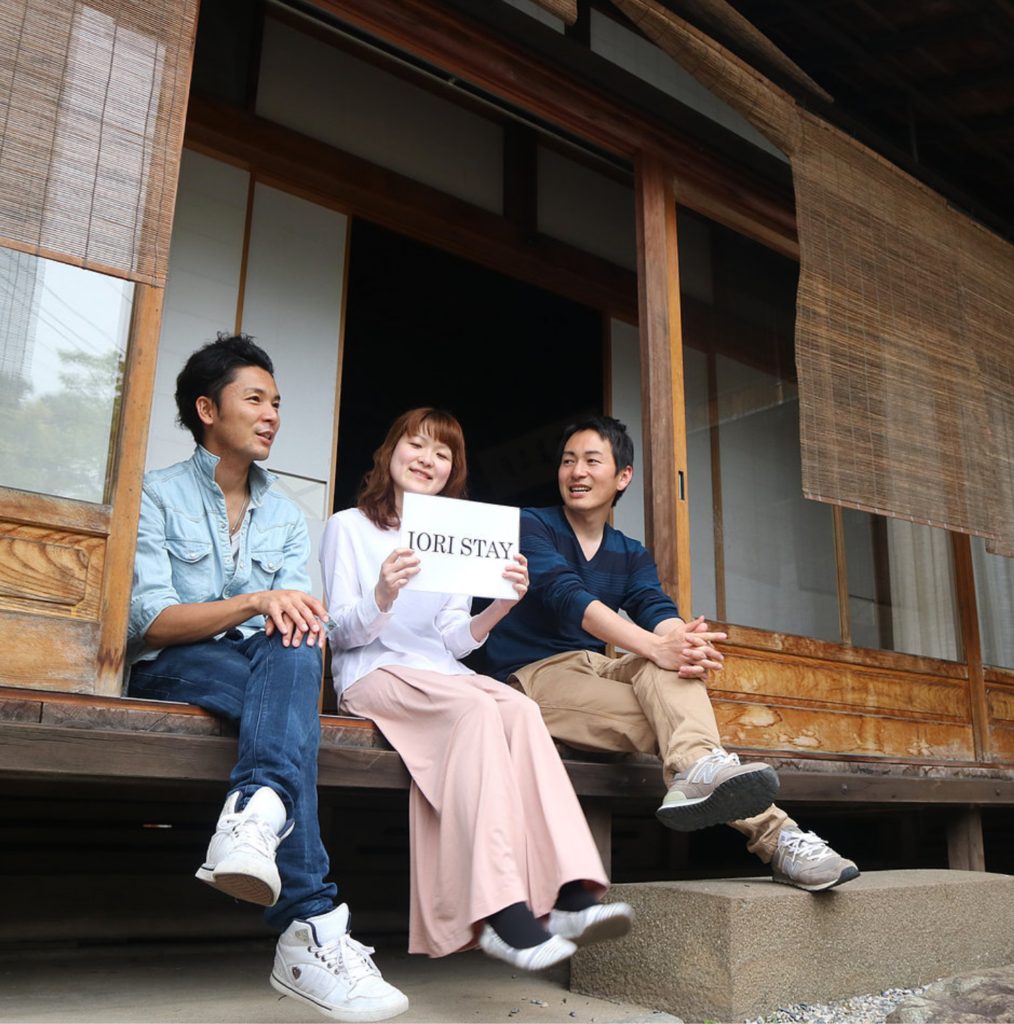
Hida People
We are not the only ones to welcome you. If you have any problems, please talk to the locals. Feel free to talk to the shop staff and repeat customers. That’s probably why you like Hida.

Pick-up service
If you come by train or bus, we can pick you up at Takayama Station or Hida Furukawa Station. (16:00 to 20:00)

A local restaurant partner chef will deliver breakfast to your hotel every morning. (Original Japanese menu only for IORI STAY customers) For those who stay for 2 nights or more, we will serve Japanese and Western dishes alternately. If you have any dietary restrictions, please feel free to contact us in advance.

Partner hot springs
Customers staying at IORI SHIOROYAMA and IORI MIYAGAWA can use the partner hot springs once per stay for free.

At check-in, we will show you the equipments of our place, sightseeing spots, restaurants, and other information beyond the guidebooks. If you have any questions, please feel free to ask us. If you have any questions concerning birthdays, special anniversaries, dietary restrictions, etc., please feel free to contact us too. We will do our best as much as possible.

The latest equipment is available, such as Hida furniture, Bluetooth speakers, appliances made by BALMUDA, and air purifiers. For more details, please see the details of facility information.

The chef, Mr. Sumitake, trained at Kyoto’s famous shōjin kaiseki restaurant “Gouritei”, and also trained at Kakusho, one of the most prestigious restaurants which has a long history in Takayama, for 18 years. He is particular about the ingredients, and purchases high-quality ones made from local. He opened the Kanoya so that you can easily enjoy really delicious dishes that bring out the flavor of the ingredients. Many guests has been impressed with his dishes and personality. He serves breakfast as an exclusive chef in the Takayama area of IORI STAY.

Ichinomachi Coffee Shop
Mr. Morimoto, a chef of IORI STAY in Hida area, runs a farm called “Soya Unehata” by himself, and grows vegetables by natural farming methods such as fertilizer-free and pesticide-free. You can feel the nature of Hida and the changes of the four seasons by plenty of vegetables raised in his own farm. He serves breakfast as an exclusive chef in the Hida area of IORI STAY.

Tanabe Ryokan
You can enjoy authentic ONSEN experience in our partner Ryokan. (Only for IORI SHIROYAMA and IORI MIYAGAWA customers)
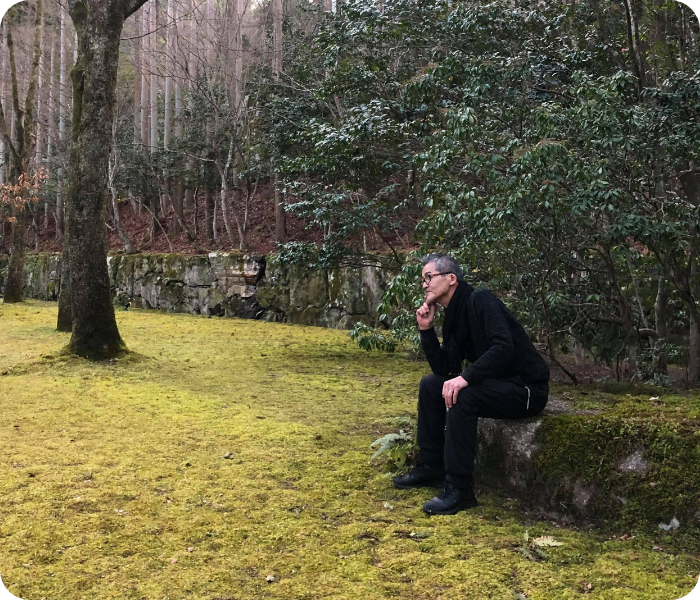
Architectural Design Dezam
An architect office by Mr. Takebayashi who considered the townscape and people living in the area. The reproduction of old folk houses and the design of typical Machiya in Hida, have been loved by local people for generations and are called Takebayashi art.
As a company committed to the Hida region, HIDAIIYO respects the culture of Hida and is engaged in business to increase the value of Hida. Through the accommodation business to preserve the scenery and traditions of the town and the tour business to let travelers rediscover the value of the Hida area, We will continue to work hard in cooperation with the local people to make many travelers come back.
HIDAIIYO Website Hida Local Experience
Reservation
Hida furukawa.

Suggested Searches
- Climate Change
- Expedition 64
- Mars perseverance
- SpaceX Crew-2
- International Space Station
- View All Topics A-Z
Humans in Space
Earth & climate, the solar system, the universe, aeronautics, learning resources, news & events.

Discovery Alert: Spock’s Home Planet Goes ‘Poof’

NASA’s OSIRIS-APEX Unscathed After Searing Pass of Sun

Ongoing Venus Volcanic Activity Discovered With NASA’s Magellan Data
- Search All NASA Missions
- A to Z List of Missions
- Upcoming Launches and Landings
Spaceships and Rockets
- Communicating with Missions
- James Webb Space Telescope
- Hubble Space Telescope
- Why Go to Space
- Astronauts Home
- Commercial Space
- Destinations
- Living in Space
- Explore Earth Science
- Earth, Our Planet
- Earth Science in Action
- Earth Multimedia
- Earth Science Researchers
- Pluto & Dwarf Planets
- Asteroids, Comets & Meteors
- The Kuiper Belt
- The Oort Cloud
- Skywatching
- The Search for Life in the Universe
- Black Holes
- The Big Bang
- Dark Energy & Dark Matter
- Earth Science
- Planetary Science
- Astrophysics & Space Science
- The Sun & Heliophysics
- Biological & Physical Sciences
- Lunar Science
- Citizen Science
- Astromaterials
- Aeronautics Research
Human Space Travel Research
- Science in the Air
- NASA Aircraft
- Flight Innovation
- Supersonic Flight
- Air Traffic Solutions
- Green Aviation Tech
- Drones & You
- Technology Transfer & Spinoffs
- Space Travel Technology
- Technology Living in Space
- Manufacturing and Materials
- Science Instruments
- For Kids and Students
- For Educators
- For Colleges and Universities
- For Professionals
- Science for Everyone
- Requests for Exhibits, Artifacts, or Speakers
- STEM Engagement at NASA
- NASA's Impacts
- Centers and Facilities
- Directorates
- Organizations
- People of NASA
- Internships
- Our History
- Doing Business with NASA
- Get Involved
- Aeronáutica
- Ciencias Terrestres
- Sistema Solar
- All NASA News
- Video Series on NASA+
- Newsletters
- Social Media
- Media Resources
- Upcoming Launches & Landings
- Virtual Events
- Sounds and Ringtones
- Interactives
- STEM Multimedia
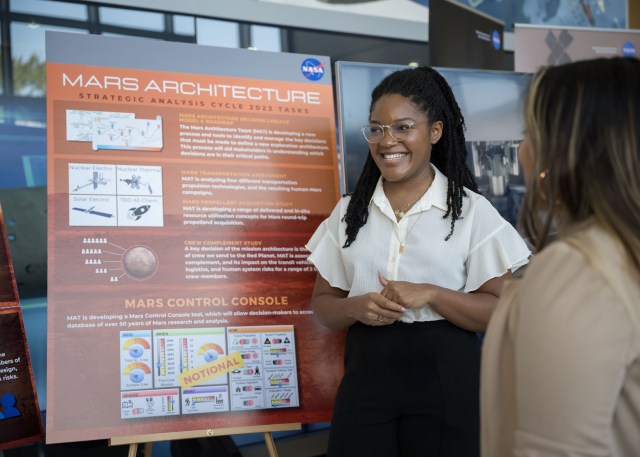
Clare Luckey: Shaping the Future of Mars Missions and Inspiring the Artemis Generation

Welcome Back to Planet Earth, Expedition 70 Crew!

Astronaut Exercise

Eleasa Kim: Pioneering CLDP Payload Operations and Cultural Integration
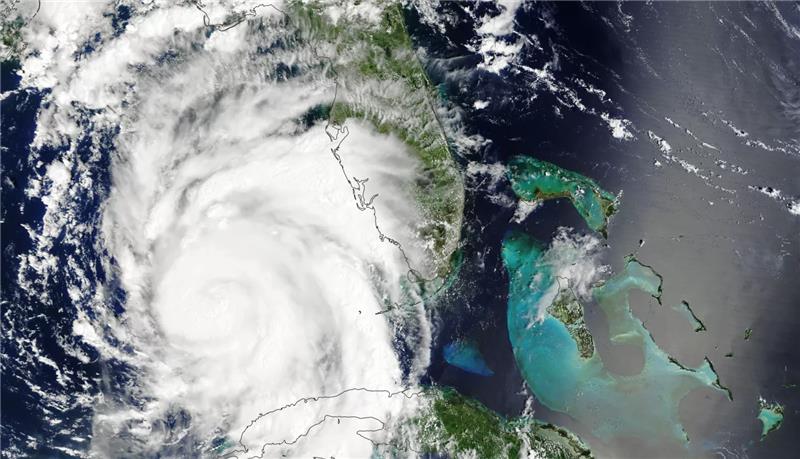
NASA, IBM Research to Release New AI Model for Weather, Climate

NASA “Wildfire Digital Twin” Pioneers New AI Models and Streaming Data Techniques for Forecasting Fire and Smoke

NASA’s Psyche Fires Up Its Sci-Fi-Worthy Thrusters
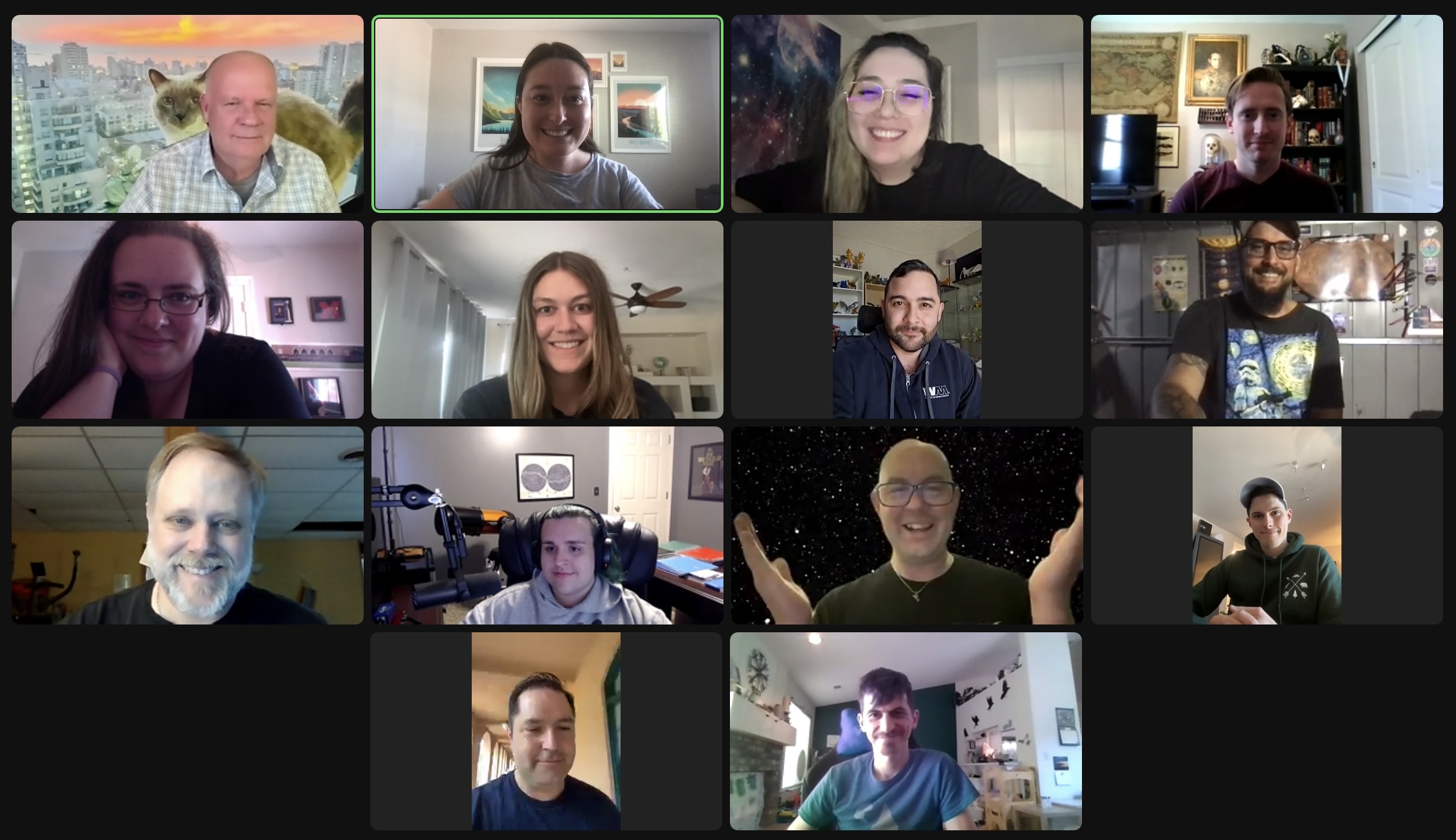
Arizona Students Go on an Exoplanet Watch

Hubble Captures a Bright Spiral in the Queen’s Hair

NASA, Industry to Start Designing More Sustainable Jet Engine Core

Aviary: A New NASA Software Platform for Aircraft Modelling

NASA’s X-59 Passes Milestone Toward Safe First Flight

NASA’s Compact Infrared Cameras Enable New Science

Tech Today: From Spacesuits to Racing Suits

NASA Around the World: Interns Teach Virtual Lessons in Kenya
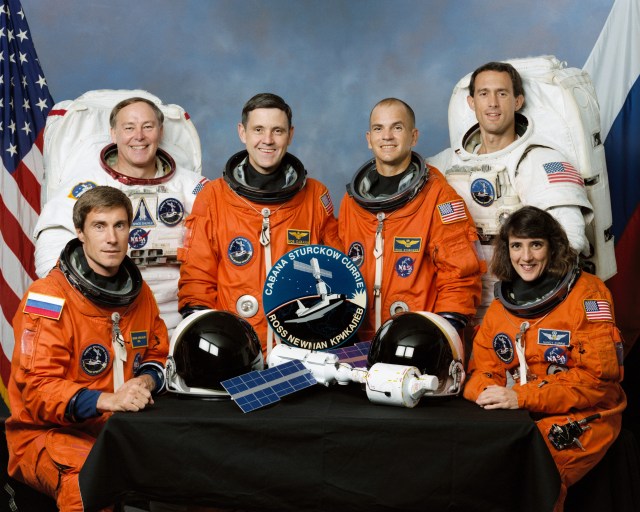
15 Years Ago: First Time all Partners Represented aboard the International Space Station

Johnson Celebrates AA and NHPI Heritage Month: Britney Tang

Diez maneras en que los estudiantes pueden prepararse para ser astronautas

Astronauta de la NASA Marcos Berríos

Resultados científicos revolucionarios en la estación espacial de 2023
From studies that seek to understand how the human body adapts to time in space to research on spacesuits and spacecraft, NASA works to ensure the safety of astronauts as they push the boundaries of space exploration.
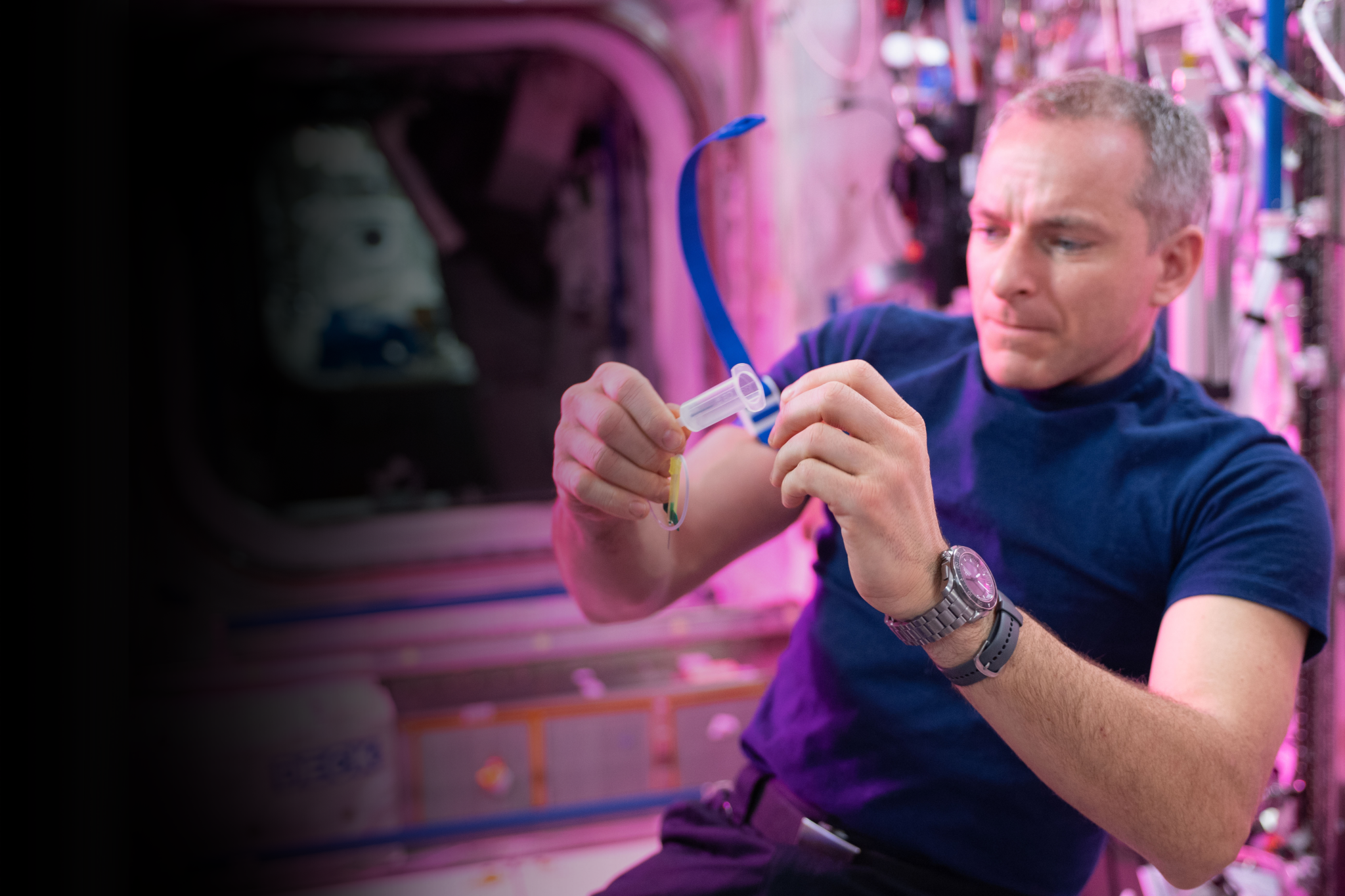
Learn More About Human Space Travel Research
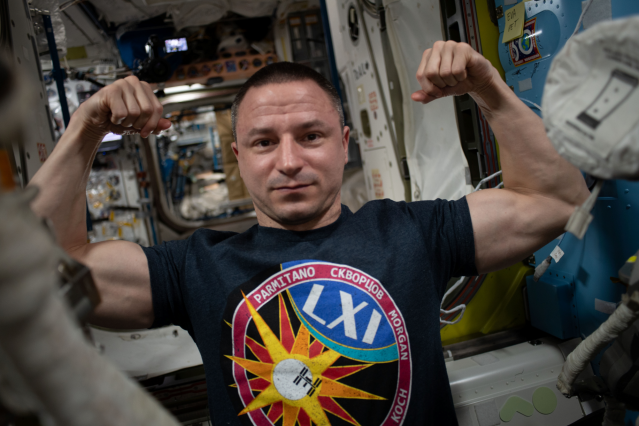
The Body in Space
Spaceflight affects bones, muscles, vision, and more. Learn about the changes humans may undergo during spaceflight, as well as the steps NASA takes to keep astronauts healthy and safe.
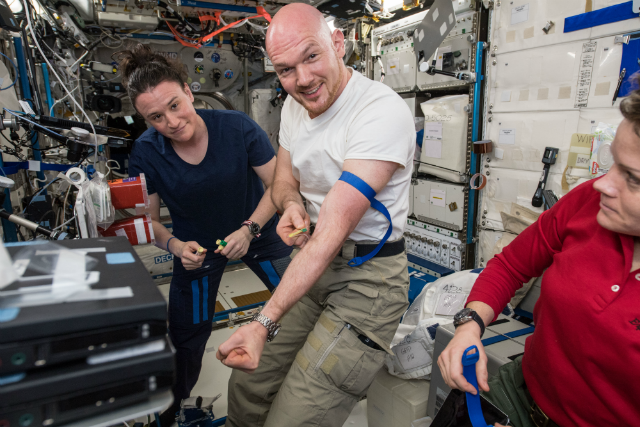
Research in Space
NASA seeks to understand how the human body changes while astronauts live and work on the space station. Learn how scientists work to maintain the health and well-being of crew members during and after their missions.
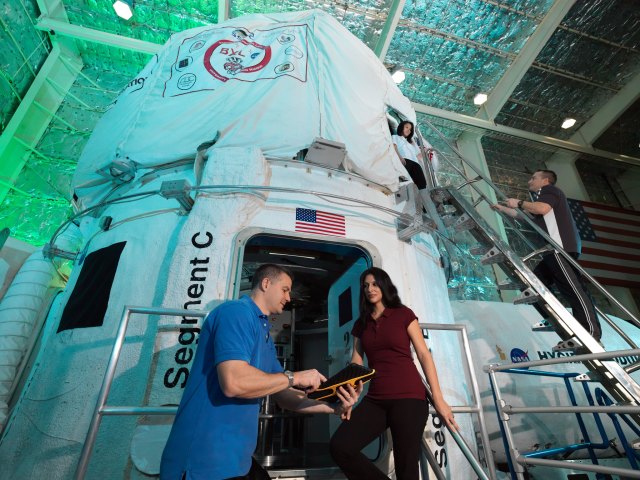
Research on Earth
NASA conducts Earth-bound simulations of life in space. Learn how scientists use such missions to study the way humans adapt to challenges astronauts may encounter on journeys to the Moon and Mars.

Extended Stays in Space
Frank Rubio, Mark Vande Hei, Scott Kelly, and others have spent an extended amount of time in space. Learn about the record-holders for the longest continuous spaceflights by U.S. astronauts.
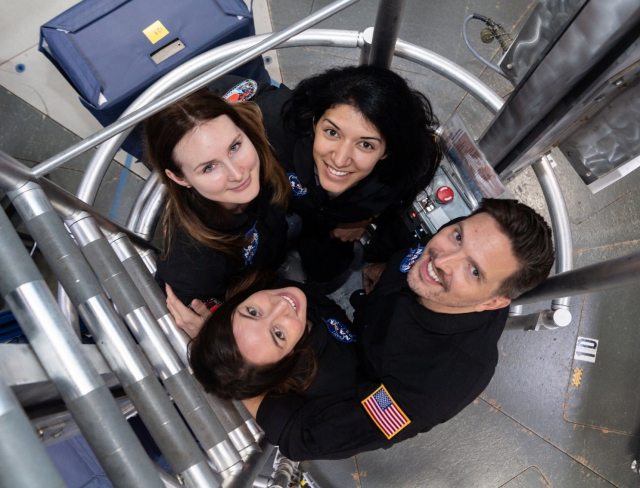
Collaborate With Us
Are you developing innovative ways to keep astronauts healthy and mission-ready ? Partner with NASA’s Human Research Program (HRP)! Check out information on NSPIRES and internships, and explore our how-to guides for working with us.
Spacewalk Spacesuit Basics
Spacesuits are much more than a set of clothes astronauts wear. However, like a set of clothes, different suits serve different…

Staying Healthy in Space
Experiments to Unlock How Human Bodies React to Long Space Journeys
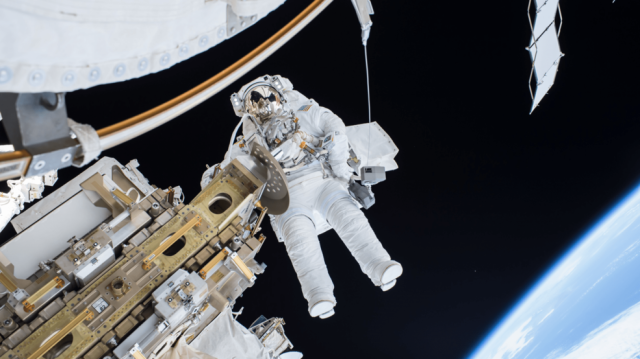
NASA Harnesses US Navy Spinning Device to Simulate Spaceflight

Isolation – What Can We Learn From the Experiences of NASA Astronauts?

New Tests Evaluate Mission Readiness of Astronauts Upon Landing

Scientists Probe How Long-Term Spaceflight Alters Immunity
Top Five Technologies Needed for a Spacecraft to Survive Deep Space
When a spacecraft built for humans ventures into deep space, it requires an array of features to keep it and…

Food in Space
Astronauts require food that is nutritious, appetizing, long-lasting, easy to make, and more. We strive to continuously improve the quality of space food and to satisfy the dietary needs of crew members on increasingly longer and more distant spaceflight missions.
The Menu for Mars: Designing a Deep Space Food System
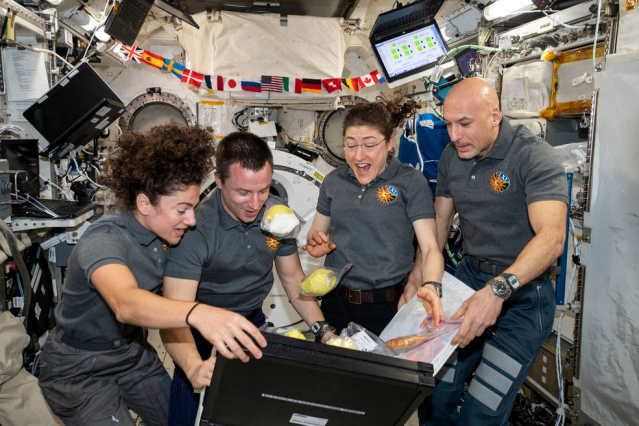
How Does Spaceflight Change Food Appeal?

Enhanced Diet May Help Astronauts Adapt to Spaceflight
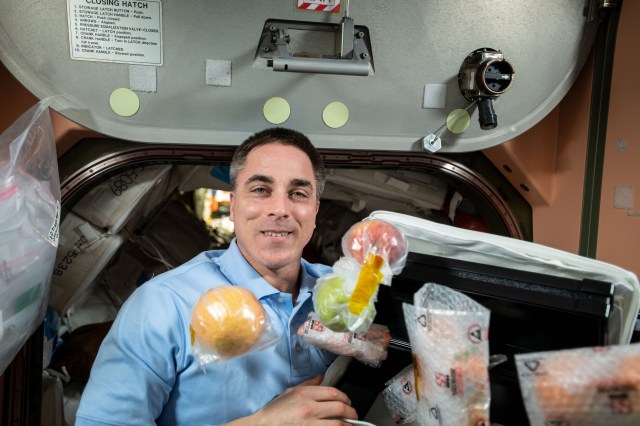
Space simulations on Earth as a research tool
Take a peek into the lives of crew on a simulated mission to Mars. Confined inside NASA's Human Exploration Research Analog (HERA), these crew help researchers study how teams overcome isolation and confinement to accomplish mission-critical tasks.
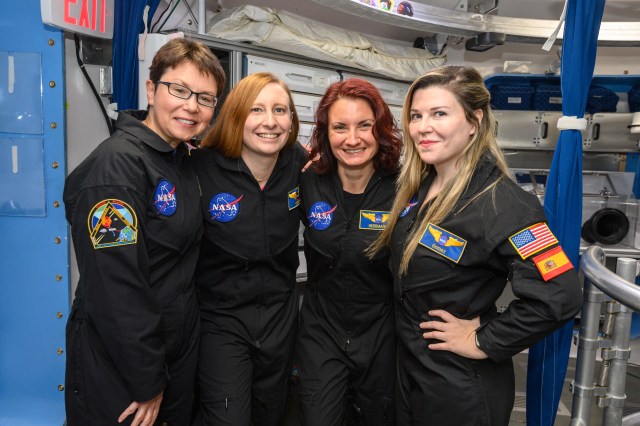

Benefits to Humanity
Space exploration unites the world to inspire the next generation, make ground-breaking discoveries, and create new opportunities.
Technologies and missions we develop for human spaceflight have thousands of applications on Earth, boosting the economy, creating new career paths, and advancing everyday technologies all around us.
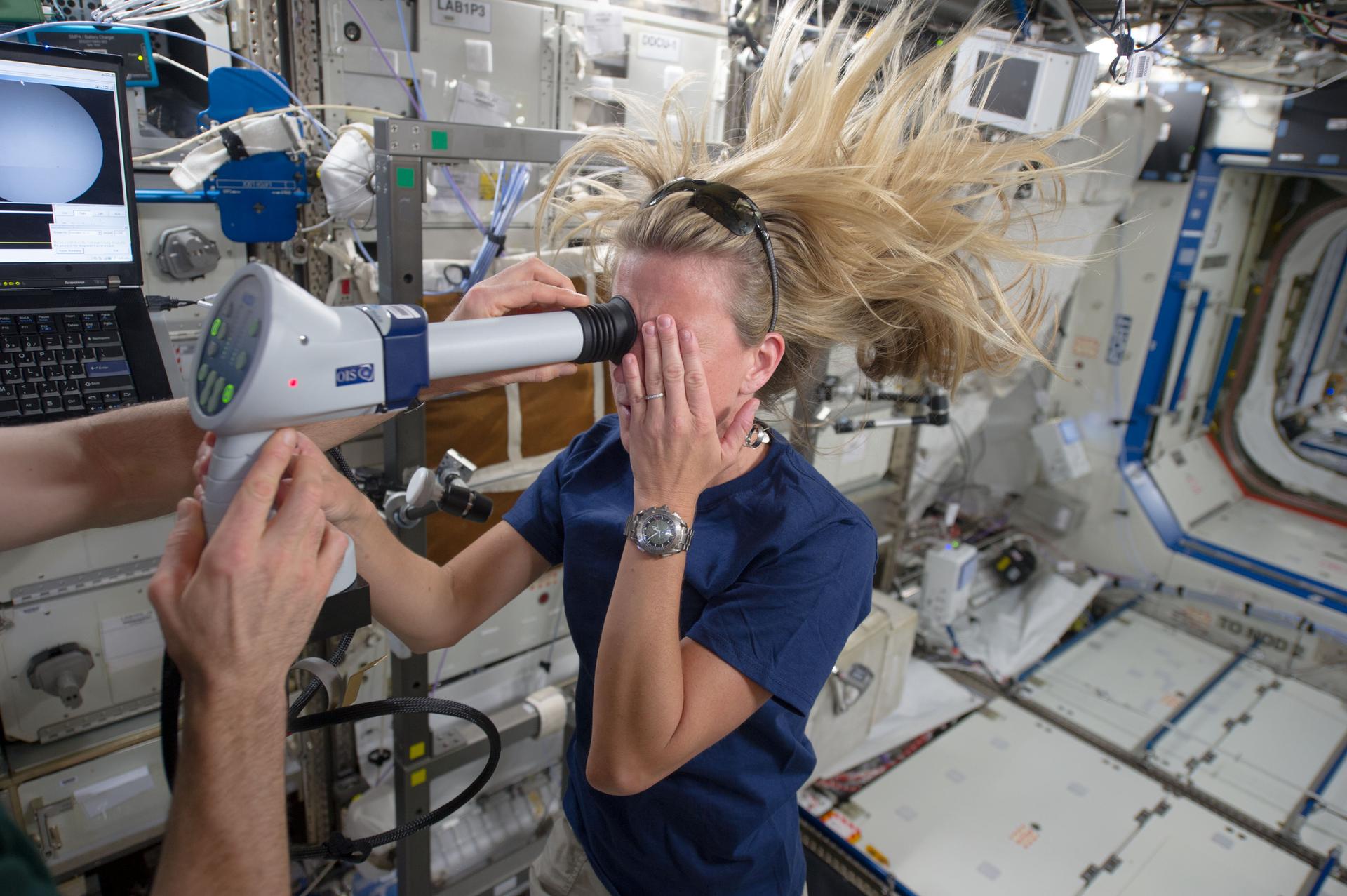
Discover More Topics From NASA
Human Research Program

Space Station Research and Technology

- Search Please fill out this field.
- Manage Your Subscription
- Give a Gift Subscription
- Newsletters
- Sweepstakes
- Travel Tips
What Travel Looked Like Through the Decades
:max_bytes(150000):strip_icc():format(webp)/maya-kachroo-levine-author-pic-1-2000-1209fcfd315444719a7906644a920183.jpg)
Getting from point A to point B has not always been as easy as online booking, Global Entry , and Uber. It was a surprisingly recent event when the average American traded in the old horse-and-carriage look for a car, plane, or even private jet .
What was it like to travel at the turn of the century? If you were heading out for a trans-Atlantic trip at the very beginning of the 20th century, there was one option: boat. Travelers planning a cross-country trip had something akin to options: carriage, car (for those who could afford one), rail, or electric trolley lines — especially as people moved from rural areas to cities.
At the beginning of the 1900s, leisure travel in general was something experienced exclusively by the wealthy and elite population. In the early-to-mid-20th century, trains were steadily a popular way to get around, as were cars. The debut regional airlines welcomed their first passengers in the 1920s, but the airline business didn't see its boom until several decades later. During the '50s, a huge portion of the American population purchased a set of wheels, giving them the opportunity to hit the open road and live the American dream.
Come 1960, airports had expanded globally to provide both international and domestic flights to passengers. Air travel became a luxury industry, and a transcontinental trip soon became nothing but a short journey.
So, what's next? The leisure travel industry has quite a legacy to fulfill — fancy a trip up to Mars , anyone? Here, we've outlined how travel (and specifically, transportation) has evolved over every decade of the 20th and 21st centuries.
The 1900s was all about that horse-and-carriage travel life. Horse-drawn carriages were the most popular mode of transport, as it was before cars came onto the scene. In fact, roadways were not plentiful in the 1900s, so most travelers would follow the waterways (primarily rivers) to reach their destinations. The 1900s is the last decade before the canals, roads, and railway plans really took hold in the U.S., and as such, it represents a much slower and antiquated form of travel than the traditions we associate with the rest of the 20th century.
Cross-continental travel became more prevalent in the 1910s as ocean liners surged in popularity. In the '10s, sailing via steam ship was the only way to get to Europe. The most famous ocean liner of this decade, of course, was the Titanic. The largest ship in service at the time of its 1912 sailing, the Titanic departed Southampton, England on April 10 (for its maiden voyage) and was due to arrive in New York City on April 17. At 11:40 p.m. on the evening of April 14, it collided with an iceberg and sank beneath the North Atlantic three hours later. Still, when the Titanic was constructed, it was the largest human-made moving object on the planet and the pinnacle of '10s travel.
The roaring '20s really opened our eyes up to the romance and excitement of travel. Railroads in the U.S. were expanded in World War II, and travelers were encouraged to hop on the train to visit out-of-state resorts. It was also a decade of prosperity and economic growth, and the first time middle-class families could afford one of the most crucial travel luxuries: a car. In Europe, luxury trains were having a '20s moment coming off the design glamour of La Belle Epoque, even though high-end train travel dates back to the mid-1800s when George Pullman introduced the concept of private train cars.
Finally, ocean liners bounced back after the challenges of 1912 with such popularity that the Suez Canal had to be expanded. Most notably, travelers would cruise to destinations like Jamaica and the Bahamas.
Cue "Jet Airliner" because we've made it to the '30s, which is when planes showed up on the mainstream travel scene. While the airplane was invented in 1903 by the Wright brothers, and commercial air travel was possible in the '20s, flying was quite a cramped, turbulent experience, and reserved only for the richest members of society. Flying in the 1930s (while still only for elite, business travelers) was slightly more comfortable. Flight cabins got bigger — and seats were plush, sometimes resembling living room furniture.
In 1935, the invention of the Douglas DC-3 changed the game — it was a commercial airliner that was larger, more comfortable, and faster than anything travelers had seen previously. Use of the Douglas DC-3 was picked up by Delta, TWA, American, and United. The '30s was also the first decade that saw trans-Atlantic flights. Pan American Airways led the charge on flying passengers across the Atlantic, beginning commercial flights across the pond in 1939.
1940s & 1950s
Road trip heyday was in full swing in the '40s, as cars got better and better. From convertibles to well-made family station wagons, cars were getting bigger, higher-tech, and more luxurious. Increased comfort in the car allowed for longer road trips, so it was only fitting that the 1950s brought a major expansion in U.S. highway opportunities.
The 1950s brought the Interstate system, introduced by President Eisenhower. Prior to the origination of the "I" routes, road trippers could take only the Lincoln Highway across the country (it ran all the way from NYC to San Francisco). But the Lincoln Highway wasn't exactly a smooth ride — parts of it were unpaved — and that's one of the reasons the Interstate system came to be. President Eisenhower felt great pressure from his constituents to improve the roadways, and he obliged in the '50s, paving the way for smoother road trips and commutes.
The '60s is the Concorde plane era. Enthusiasm for supersonic flight surged in the '60s when France and Britain banded together and announced that they would attempt to make the first supersonic aircraft, which they called Concorde. The Concorde was iconic because of what it represented, forging a path into the future of aviation with supersonic capabilities. France and Britain began building a supersonic jetliner in 1962, it was presented to the public in 1967, and it took its maiden voyage in 1969. However, because of noise complaints from the public, enthusiasm for the Concorde was quickly curbed. Only 20 were made, and only 14 were used for commercial airline purposes on Air France and British Airways. While they were retired in 2003, there is still fervent interest in supersonic jets nearly 20 years later.
Amtrak incorporated in 1971 and much of this decade was spent solidifying its brand and its place within American travel. Amtrak initially serviced 43 states (and Washington D.C.) with 21 routes. In the early '70s, Amtrak established railway stations and expanded to Canada. The Amtrak was meant to dissuade car usage, especially when commuting. But it wasn't until 1975, when Amtrak introduced a fleet of Pullman-Standard Company Superliner cars, that it was regarded as a long-distance travel option. The 235 new cars — which cost $313 million — featured overnight cabins, and dining and lounge cars.
The '80s are when long-distance travel via flight unequivocally became the norm. While the '60s and '70s saw the friendly skies become mainstream, to a certain extent, there was still a portion of the population that saw it as a risk or a luxury to be a high-flyer. Jetsetting became commonplace later than you might think, but by the '80s, it was the long-haul go-to mode of transportation.
1990s & 2000s
Plans for getting hybrid vehicles on the road began to take shape in the '90s. The Toyota Prius (a gas-electric hybrid) was introduced to the streets of Japan in 1997 and took hold outside Japan in 2001. Toyota had sold 1 million Priuses around the world by 2007. The hybrid trend that we saw from '97 to '07 paved the way for the success of Teslas, chargeable BMWs, and the electric car adoption we've now seen around the world. It's been impactful not only for the road trippers but for the average American commuter.
If we're still cueing songs up here, let's go ahead and throw on "Lifestyles of the Rich and Famous," because the 2010s are when air travel became positively over-the-top. Qatar Airways rolled out their lavish Qsuites in 2017. Business class-only airlines like La Compagnie (founded in 2013) showed up on the scene. The '10s taught the luxury traveler that private jets weren't the only way to fly in exceptional style.
Of course, we can't really say what the 2020 transportation fixation will be — but the stage has certainly been set for this to be the decade of commercial space travel. With Elon Musk building an elaborate SpaceX rocket ship and making big plans to venture to Mars, and of course, the world's first space hotel set to open in 2027 , it certainly seems like commercialized space travel is where we're headed next.
:max_bytes(150000):strip_icc():format(webp)/Ellie-Nan-Storck-00d7064c4ef24a22a8900f0416c31833.jpeg)
Related Articles
5 Ways to Travel Like a Human
All too often, we’ve meet travelers that look like they are straight from the set of 28 Days Later – dirty, stinky, sleep-deprived, emaciated, and hung over. They drag their feet from castle to cathedral groaning and drooling all the way. How can anyone travel like that and actually get something out of it (besides psoriasis of the liver)?
You travel to see the destination, and you can’t expect to have a productive day in Istanbul if you ignore basic hygiene. It may sound like common sense, but you would be surprised.
Here are a few tips to keep you on the path of humanity as you travel:
1. Keep It Clean
If you live in a major city, you know what it’s like to be sitting on the metro next to a backpacker that looks like he and his bag have been thrown from a moving car. Come on. Unless you are camping or hiking, there really is no excuse to skip bathing. There are people around you that have nostrils!
I am aware that people travel on a very tight budget. However, even the most basic hostel has a shower. You can find free soap and shampoo most of the time. We went for several weeks just using leftovers in hostel bathrooms. Do yourself and everyone around you a favor and take 10 minutes to bathe each day. Even if the water is lukewarm and you are afraid to touch the slimy walls, it is still better than nothing.
2. Don’t Over Do It
Another typical state of backpackers is the perpetual hangover. It’s fun to party all night with your new hostel pals, but is it worth missing an entire day of sights in Paris? Maybe I’m just getting too old, but I don’t want to be squinting through sunglasses and popping aspirin all day at the Louvre.
Go out and have fun, but remember to take it easy.
3. Get Your Beauty Rest
This goes right along with the above tip. You need sleep to stay healthy. How can you expect to have a productive day in Salzburg if you were out all night? If you had a fun night, just sleep in. It’s okay! Don’t drag yourself out of bed at eight in the morning for the Sound of Music tour. It’s lame, anyway.
4. Just Eat It!
We once ran into a guy who only ate a piece of bread each morning and then a small snack in the evening. We shared a room with Skelator, and he would tell us that he was dizzy and seeing spots by dinner time. Is the cost savings really worth starving yourself? Also, food is one of the best parts of travel, so just eat something!
You don’t have to eat out for every meal. Go to the grocery store or market and buy some bread, fruit, and cheese. That’s always pretty cheap, or you can usually make some kind of meal out of the free food section in the hostel kitchen. Eat a couple of times a day and you’ll feel much better. We usually eat a moderate sized lunch around 1:00 and a light snack for dinner (with an ice cream stop in there somewhere). Avoid the tourist traps. The places where the locals eat are usually affordable– plus, you will learn a few things about local cuisine.
5. Take Your Meds
Another habit of backpackers that pushes them closer to Zombieland is refusing to buy medicine. If you’re sick, you need to take the time and effort to get well.
I’m not talking about aspirin or Pepto-Bismol. We’ve run into travelers who have infected cuts, rashes, or horrible tooth pain who are simply putting up with it. European pharmacies are happy to help you diagnose your problem and find a medication to ease your pain. A trip to the pharmacy won’t bust your budget. Even when I burned my leg on an island in Southeast Asia, I was able to find the necessary bandages to keep myself healthy.

Kim & Clark Kays quit their jobs for an uncertain trip around the world. Originally from St. Louis, they relocated to Chicago after getting married in 2005. After working for five years in middle school and the Fortune 500, they realized there was more to life than the 9-to-5, so made the crazy decision to exchange money for time rather than the other way around.
Their hobbies include fighting over writing styles and searching for gelato. They think food, beer, architecture, and photography are some of the best things about travel—especially when combined. Their travel blog, To Uncertainty and Beyond, includes long-term travel tips as well as humorous anecdotes from their journey through Europe and Asia. They invite you to experience their journey and learn from their adventures and mistakes.
Recent Author Posts
5 unique tips for travel in different ways, sparks for the family in orlando & fun side trips, milan travel guide for fashion & culture lovers, bordeaux travel guide: from wine & art to museums & culture, the big apple: 5 things you must do, join our community.
Get Weekly Inspiration & Stories
Connect On Social Media

Most Popular Posts
Zin, charlie palmer’s & ralph’s bistro: 3 great lunch spots in healdsburg, spanish-made pikolinos shoes, a rare combination of elegant style & comfort, nasu no tsukemono (pickled japanese eggplant), history of collard greens extends far beyond north america…, the ultimate travel guide to washington d.c..
- Behind the Scenes
- Write For Us
- Central America
- Middle East
- North America
- South America
- Adventure Travel
- Once-in-a-Lifetime
- Photography
- Style/Fashion
- Food Guides
- Gift Guides
- Spiritual Voices
- Travel Guides
- Wellness Guides
- All Travel by Interest
- Business Travel
- Family Travel
- Product Reviews
- Spirituality
- Mindful Events
- Spiritual Health
- Spiritual Travel
- Renee’s Top Picks
- Renee’s Voice
- Spas/Retreats
- Wellness Stays
- Wellness Products
- All Food/Wine
- Restaurants
- Spas & Retreats
- Lifestyle Products
- Fashion/Style
- Spiritual Products
- Spiritual Books
- Hotels & Resorts
- Vacation Rentals
- Get Listed in our Directories
- Practitioners *
- Wellness Hotels *
- Advertise with Us
- Become a Host
- List Your Business or Service*
- Partner with Us
- Sponsored Content
- Booking Resources
- Shop with Us
Pin It on Pinterest
Share this post with your friends!
Human-sounding AI can plan, help book your travel. But can you trust it?

It wasn’t so long ago that travelers planned trips without the internet.
“Back in the day, our parents used to go to these travel agents and really kind of express what they were looking for and what kind of vacation they wanted,” said Saad Saeed, co-founder and CEO of Layla, an AI travel planner whose website launched this year. “Slowly, we kind of acclimatized ourselves to start using these search boxes, clicks, these forms and filters.”
Artificial intelligence-driven tools like Layla can now turn back the clock on that experience, engaging with users almost like humans to customize travel plans with lightning speed plus all the resources of the web. But does AI actually make travel planning easier and can it compare to human expertise?
Yes and no. Here’s why.
Can AI actually understand us?
It can try.
“What are you personally looking for in this trip and what do you want out of it?” asked Saeed. “Do you want to reconnect with your partner, for example, or do you want to just feel some adventure and thrill?”
A human travel agent may ask a series of questions to understand a client’s needs. So can generative AI , which picks up on keywords. Mindtrip, an AI planner launched publicly on May 1, has an actual travel quiz that asks users to rank priorities like “Is your ideal vacation day an exhilarating adventure or a relaxing break?” using sliding scales.
“What we get at the end of that quiz, using the AI, is a really customized description,” explained Mindtrip Founder and CEO Andy Moss. That then informs what the AI suggests to the traveler.
Informed suggestions can save users time in narrowing down destinations and experiences, as well as introduce places users may never have discovered on their own.
AI travel planning is here: How to use it to plan your next vacation and what you should know first
Can AI fully replace humans?
No. Layla may sound human, using conversational phrases like “I've got three cozy nests that won't make your wallet cry.”
“She has a personality. We try to make her funny and so on, where it's really that friend that can get to know you and then recommend you the perfect stuff,” Saeed said.
But part of Layla’s expertise comes from the real-life experiences of some 1,600 travel content creators the Berlin-based platform has partnered with. Their videos and insights can give users a richer picture of what to expect.
Mindtrip also leans on human expertise, having tapped a limited group of travel influencers for curated content with plans to eventually open it up so anyone can share their travel itineraries and experiences with the public.
Story continues below.
Is AI a threat to privacy?
With all the rapid advancements in AI in just the past year, some users are wary of its safety .
“Data privacy is definitely one of our biggest concerns, and we ensure that none of the personal identifiable information ever reaches basically the model providers. That will all stay with us,” Layla’s Saeed said. “None of their personally identifiable data can ever be basically used to profile them or basically go into any of these systems, which are training these different models.”
Booz Allen Hamilton, the nation’s largest provider of AI to the federal government , focuses heavily on ethical and secure AI, as well as adhering to the government’s policies on data collection.
“We collect as little information as we can in order to provide a secure transaction,” said Booz Allen Hamilton Senior Vice President Will Healy, who heads up their recreation work, including Recreaton.gov , the government’s central travel planning site for public lands like national parks. “We don't save your searches. We don't save your credit card data. We're very careful about the data that we store.”
Yoon Kim, an assistant professor in MIT’s Electrical Engineering and Computer Science Department and Computer Science and Artificial Intelligence Laboratory , isn’t too worried about security in the initial brainstorming stages of travel planning with AI.
“I don't see, at this point, how AI-generated advice is spiritually different from travel guide articles that you might read on certain websites,” he said. “Travel planning is one really nice use case of these models, as narrow as it is, because it's a scenario in which you want to be given ideas but you don't actually need to commit to them.”
What’s next for AI?
Things could be different, though, if AI is used beyond trip planning. Deloitte sees AI being woven into all parts of travel.
“There is an opportunity for a real engine – I'm going to just use a generic term, engine – that allows you to search and pull it all together and to sort based off of your personal reasons for prioritization and then not stopping at ‘hey give me a list’ or ‘here's what to do,’ but ‘OK, now go create my itinerary, help me book it, track it all the way through that travel process,” said Matt Soderberg, principal, U.S. airlines leader for Deloitte.
Deloitte’s Facing travel’s future report, released in early April, identifies seven stages where AI can intersect with a trip, from personalized recommendations based on past travel, online purchases and tendencies to day-of issues to a post-travel pulse, where travelers may be asked about their experience and start thinking about future trips.
“When you solve across all of those, that's going to be the Holy Grail,” Soderberg said. “The difficulty is that doesn't all sit in one place. And so how do you get the right information and the right data to bring all of that together for a single experience for the consumer? And who's going to own that?”
Layla and Mindtrip, among others, already offer booking through partners like Booking.com. “It's all about making things actionable,” Moss said.
But for now, if issues come up mid-trip, AI tools can’t fix them like humans can. Humans still have to get involved.
Science | February 2, 2021
An Evolutionary Timeline of Homo Sapiens
Scientists share the findings that helped them pinpoint key moments in the rise of our species
:focal(302x105:303x106)/https://tf-cmsv2-smithsonianmag-media.s3.amazonaws.com/filer/06/5b/065b2c6e-fd25-4390-8870-417add274840/skull-arc-frontal_web_mobile.jpg)
Brian Handwerk
Science Correspondent
The long evolutionary journey that created modern humans began with a single step—or more accurately—with the ability to walk on two legs. One of our earliest-known ancestors, Sahelanthropus , began the slow transition from ape-like movement some six million years ago, but Homo sapiens wouldn’t show up for more than five million years. During that long interim, a menagerie of different human species lived, evolved and died out, intermingling and sometimes interbreeding along the way. As time went on, their bodies changed, as did their brains and their ability to think, as seen in their tools and technologies.
To understand how Homo sapiens eventually evolved from these older lineages of hominins, the group including modern humans and our closest extinct relatives and ancestors, scientists are unearthing ancient bones and stone tools, digging into our genes and recreating the changing environments that helped shape our ancestors’ world and guide their evolution.
These lines of evidence increasingly indicate that H. sapiens originated in Africa, although not necessarily in a single time and place. Instead it seems diverse groups of human ancestors lived in habitable regions around Africa, evolving physically and culturally in relative isolation, until climate driven changes to African landscapes spurred them to intermittently mix and swap everything from genes to tool techniques. Eventually, this process gave rise to the unique genetic makeup of modern humans.
“East Africa was a setting in foment—one conducive to migrations across Africa during the period when Homo sapiens arose,” says Rick Potts , director of the Smithsonian’s Human Origins Program. “It seems to have been an ideal setting for the mixing of genes from migrating populations widely spread across the continent. The implication is that the human genome arose in Africa. Everyone is African, and yet not from any one part of Africa.”
New discoveries are always adding key waypoints to the chart of our human journey. This timeline of Homo sapiens features some of the best evidence documenting how we evolved.
550,000 to 750,000 Years Ago: The Beginning of the Homo sapiens Lineage
/https://tf-cmsv2-smithsonianmag-media.s3.amazonaws.com/filer/ad/87/ad873224-ef9b-4b54-9f8b-d471b4609f26/2009-49418-h-heidelbergensis-jgurche_web.jpg)
Genes, rather than fossils, can help us chart the migrations, movements and evolution of our own species—and those we descended from or interbred with over the ages.
The oldest-recovered DNA of an early human relative comes from Sima de los Huesos , the “Pit of Bones.” At the bottom of a cave in Spain’s Atapuerca Mountains scientists found thousands of teeth and bones from 28 different individuals who somehow ended up collected en masse. In 2016, scientists painstakingly teased out the partial genome from these 430,000-year-old remains to reveal that the humans in the pit are the oldest known Neanderthals , our very successful and most familiar close relatives. Scientists used the molecular clock to estimate how long it took to accumulate the differences between this oldest Neanderthal genome and that of modern humans, and the researchers suggest that a common ancestor lived sometime between 550,000 and 750,000 years ago.
Pinpoint dating isn't the strength of genetic analyses, as the 200,000-year margin of error shows. “In general, estimating ages with genetics is imprecise,” says Joshua Akey, who studies evolution of the human genome at Princeton University. “Genetics is really good at telling us qualitative things about the order of events, and relative time frames.” Before genetics, these divergence dates were estimated by the oldest fossils of various lineages scientists found. In the case of H. sapiens, known remains only date back some 300,000 years, so gene studies have located the divergence far more accurately on our evolutionary timeline than bones alone ever could.
Though our genes clearly show that modern humans, Neanderthals and Denisovans —a mysterious hominin species that left behind substantial traces in our DNA but, so far, only a handful of tooth and bone remains—do share a common ancestor, it’s not apparent who it was. Homo heidelbergensis , a species that existed from 200,000 to 700,000 years ago, is a popular candidate. It appears that the African family tree of this species leads to Homo sapiens while a European branch leads to Homo neanderthalensis and the Denisovans.
More ancient DNA could help provide a clearer picture, but finding it is no sure bet. Unfortunately, the cold, dry and stable conditions best for long-term preservation aren’t common in Africa, and few ancient African human genomes have been sequenced that are older than 10,000 years.
“We currently have no ancient DNA from Africa that even comes near the timeframes of our evolution—a process that is likely to have largely taken place between 800,000 and 300,000 years ago,” says Eleanor Scerri, an archaeological scientist at the Max Planck Institute for the Science of Human History in Germany.
300,000 Years Ago: Fossils Found of Oldest Homo sapiens
/https://tf-cmsv2-smithsonianmag-media.s3.amazonaws.com/filer/e3/7f/e37fea5e-d63a-4e07-8032-17e74e539d77/figure-11_web_2.jpg)
As the physical remains of actual ancient people, fossils tell us most about what they were like in life. But bones or teeth are still subject to a significant amount of interpretation. While human remains can survive after hundreds of thousands of years, scientists can’t always make sense of the wide range of morphological features they see to definitively classify the remains as Homo sapiens , or as different species of human relatives.
Fossils often boast a mixture of modern and primitive features, and those don’t evolve uniformly toward our modern anatomy. Instead, certain features seem to change in different places and times, suggesting separate clusters of anatomical evolution would have produced quite different looking people.
No scientists suggest that Homo sapiens first lived in what’s now Morocco, because so much early evidence for our species has been found in both South Africa and East Africa. But fragments of 300,000-year-old skulls, jaws, teeth and other fossils found at Jebel Irhoud , a rich site also home to advanced stone tools, are the oldest Homo sapiens remains yet found.
The remains of five individuals at Jebel Irhoud exhibit traits of a face that looks compellingly modern, mixed with other traits like an elongated brain case reminiscent of more archaic humans. The remains’ presence in the northwestern corner of Africa isn’t evidence of our origin point, but rather of how widely spread humans were across Africa even at this early date.
Other very old fossils often classified as early Homo sapiens come from Florisbad, South Africa (around 260,000 years old), and the Kibish Formation along Ethiopia’s Omo River (around 195,000 years old).
The 160,000-year-old skulls of two adults and a child at Herto, Ethiopia, were classified as the subspecies Homo sapiens idaltu because of slight morphological differences including larger size. But they are otherwise so similar to modern humans that some argue they aren’t a subspecies at all. A skull discovered at Ngaloba, Tanzania, also considered Homo sapiens , represents a 120,000-year-old individual with a mix of archaic traits and more modern aspects like smaller facial features and a further reduced brow.
Debate over the definition of which fossil remains represent modern humans, given these disparities, is common among experts. So much so that some seek to simplify the characterization by considering them part of a single, diverse group.
“The fact of the matter is that all fossils before about 40,000 to 100,000 years ago contain different combinations of so called archaic and modern features. It’s therefore impossible to pick and choose which of the older fossils are members of our lineage or evolutionary dead ends,” Scerri suggests. “The best model is currently one in which they are all early Homo sapiens , as their material culture also indicates.”
As Scerri references, African material culture shows a widespread shift some 300,000 years ago from clunky, handheld stone tools to the more refined blades and projectile points known as Middle Stone Age toolkits.
So when did fossils finally first show fully modern humans with all representative features? It’s not an easy answer. One skull (but only one of several) from Omo Kibish looks much like a modern human at 195,000 years old, while another found in Nigeria’s Iwo Eleru cave, appears very archaic, but is only 13,000 years old . These discrepancies illustrate that the process wasn’t linear, reaching some single point after which all people were modern humans.
300,000 Years Ago: Artifacts Show a Revolution in Tools
/https://tf-cmsv2-smithsonianmag-media.s3.amazonaws.com/filer/0b/ca/0bcae72f-e72d-4bde-be7c-863712b8b68e/msa-stone-tools-and-pigments-white-background_web.jpg)
Our ancestors used stone tools as long as 3.3 million years ago and by 1.75 million years ago they’d adopted the Acheulean culture , a suite of chunky handaxes and other cutting implements that remained in vogue for nearly 1.5 million years. As recently as 400,000 years ago, thrusting spears used during the hunt of large prey in what is now Germany were state of the art. But they could only be used up close, an obvious and sometimes dangerous limitation.
Even as they acquired the more modern anatomy seen in living humans, the ways our ancestors lived, and the tools they created, changed as well.
Humans took a leap in tool tech with the Middle Stone Age some 300,000 years ago by making those finely crafted tools with flaked points and attaching them to handles and spear shafts to greatly improve hunting prowess. Projectile points like those Potts and colleagues dated to 298,000 to 320,000 years old in southern Kenya were an innovation that suddenly made it possible to kill all manner of elusive or dangerous prey. “It ultimately changed how these earliest sapiens interacted with their ecosystems, and with other people,” says Potts.
Scrapers and awls, which could be used to work animal hides for clothing and to shave wood and other materials, appeared around this time. By at least 90,000 years ago barbed points made of bone— like those discovered at Katanda, Democratic Republic of the Congo —were used to spearfish
As with fossils, tool advancements appear in different places and times, suggesting that distinct groups of people evolved, and possibly later shared, these tool technologies. Those groups may include other humans who are not part of our own lineage.
Last year a collection including sophisticated stone blades was discovered near Chennai, India , and dated to at least 250,000 years ago. The presence of this toolkit in India so soon after modern humans appeared in Africa suggests that other species may have also invented them independently—or that some modern humans spread the technology by leaving Africa earlier than most current thinking suggests.
100,000 to 210,000 Years Ago: Fossils Show Homo sapiens Lived Outside of Africa
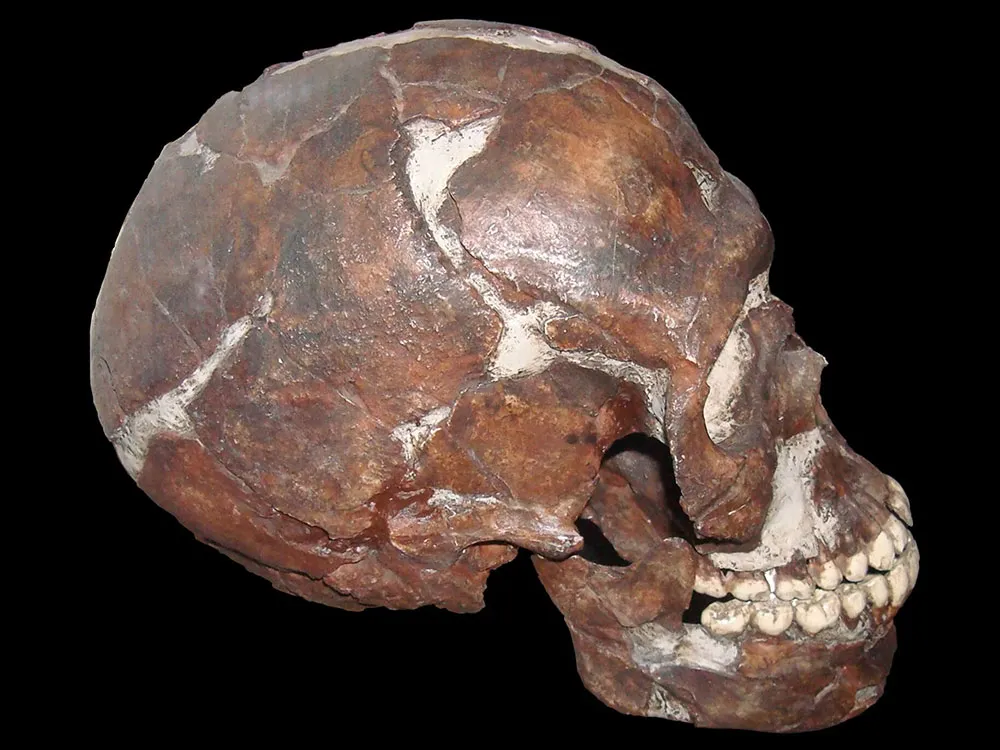
Many genetic analyses tracing our roots back to Africa make it clear that Homo sapiens originated on that continent. But it appears that we had a tendency to wander from a much earlier era than scientists had previously suspected.
A jawbone found inside a collapsed cave on the slopes of Mount Carmel, Israel, reveals that modern humans dwelt there, alongside the Mediterranean, some 177,000 to 194,000 years ago. Not only are the jaw and teeth from Misliya Cave unambiguously similar to those seen in modern humans, they were found with sophisticated handaxes and flint tools.
Other finds in the region, including multiple individuals at Qafzeh, Israel, are dated later. They range from 100,000 to 130,000 years ago, suggesting a long presence for humans in the region. At Qafzeh, human remains were found with pieces of red ocher and ocher-stained tools in a site that has been interpreted as the oldest intentional human burial .
Among the limestone cave systems of southern China, more evidence has turned up from between 80,000 and 120,000 years ago. A 100,000-year-old jawbone, complete with a pair of teeth, from Zhirendong retains some archaic traits like a less prominent chin, but otherwise appears so modern that it may represent Homo sapiens . A cave at Daoxian yielded a surprising array of ancient teeth , barely distinguishable from our own, which suggest that Homo sapiens groups were already living very far from Africa from 80,000 to 120,000 years ago.
Even earlier migrations are possible; some believe evidence exists of humans reaching Europe as long as 210,000 years ago. While most early human finds spark some scholarly debate, few reach the level of the Apidima skull fragment, in southern Greece, which may be more than 200,000 years old and might possibly represent the earliest modern human fossil discovered outside of Africa. The site is steeped in controversy , however, with some scholars believing that the badly preserved remains look less those of our own species and more like Neanderthals, whose remains are found just a few feet away in the same cave. Others question the accuracy of the dating analysis undertaken at the site, which is tricky because the fossils have long since fallen out of the geological layers in which they were deposited.
While various groups of humans lived outside of Africa during this era, ultimately, they aren’t part of our own evolutionary story. Genetics can reveal which groups of people were our distant ancestors and which had descendants who eventually died out.
“Of course, there could be multiple out of Africa dispersals,” says Akey. “The question is whether they contributed ancestry to present day individuals and we can say pretty definitely now that they did not.”
50,000 to 60,000 Years Ago: Genes and Climate Reconstructions Show a Migration Out of Africa
/https://tf-cmsv2-smithsonianmag-media.s3.amazonaws.com/filer/4a/5b/4a5b3d78-0dfa-4f40-ae44-e90842d2e94a/arabian_peninsula_space_view_web.jpg)
All living non-Africans, from Europeans to Australia’s aboriginal people, can trace most of their ancestry to humans who were part of a landmark migration out of Africa beginning some 50,000 to 60,000 years ago , according to numerous genetic studies published in recent years. Reconstructions of climate suggest that lower sea levels created several advantageous periods for humans to leave Africa for the Arabian Peninsula and the Middle East, including one about 55,000 years ago.
“Just by looking at DNA from present day individuals we’ve been able to infer a pretty good outline of human history,” Akey says. “A group dispersed out of Africa maybe 50 to 60 thousand years ago, and then that group traveled around the world and eventually made it to all habitable places of the world.”
While earlier African emigres to the Middle East or China may have interbred with some of the more archaic hominids still living at that time, their lineage appears to have faded out or been overwhelmed by the later migration.
15,000 to 40,000 Years Ago: Genetics and Fossils Show Homo sapiens Became the Only Surviving Human Species
/https://tf-cmsv2-smithsonianmag-media.s3.amazonaws.com/filer/e4/af/e4afdbe6-59c0-4a6b-8112-8b30e274d9a0/2009-49519-h-floresiensis-jgurche_web.jpg)
For most of our history on this planet, Homo sapiens have not been the only humans. We coexisted, and as our genes make clear frequently interbred with various hominin species, including some we haven’t yet identified. But they dropped off, one by one, leaving our own species to represent all humanity. On an evolutionary timescale, some of these species vanished only recently.
On the Indonesian island of Flores, fossils evidence a curious and diminutive early human species nicknamed “hobbit.” Homo floresiensis appear to have been living until perhaps 50,000 years ago, but what happened to them is a mystery. They don’t appear to have any close relation to modern humans including the Rampasasa pygmy group, which lives in the same region today.
Neanderthals once stretched across Eurasia from Portugal and the British Isles to Siberia. As Homo sapiens became more prevalent across these areas the Neanderthals faded in their turn, being generally consigned to history by some 40,000 years ago. Some evidence suggests that a few die-hards might have held on in enclaves, like Gibraltar, until perhaps 29,000 years ago. Even today traces of them remain because modern humans carry Neanderthal DNA in their genome .
Our more mysterious cousins, the Denisovans, left behind so few identifiable fossils that scientists aren’t exactly sure what they looked like, or if they might have been more than one species. A recent study of human genomes in Papua New Guinea suggests that humans may have lived with and interbred with Denisovans there as recently as 15,000 years ago, though the claims are controversial. Their genetic legacy is more certain. Many living Asian people inherited perhaps 3 to 5 percent of their DNA from the Denisovans.
Despite the bits of genetic ancestry they contributed to living people, all of our close relatives eventually died out, leaving Homo sapiens as the only human species. Their extinctions add one more intriguing, perhaps unanswerable question to the story of our evolution—why were we the only humans to survive?
Get the latest Science stories in your inbox.
Brian Handwerk | READ MORE
Brian Handwerk is a science correspondent based in Amherst, New Hampshire.

HOSTEL LING INTERNATIONAL

MIYUKINO-MORI

Travel Like a Human ?
Welcome to kitashinshu, iiyama and kijimadaira our hostel locates near of iiyama in the northern part of nagano, called, kitashinshu(hitoric name of north nagano). it is about 30km north from nagano city, where the winter olympic games held in 1998. since long time ago, people have spent the winters making handicrafts, some of which have developed by incorporating local natural features in their crafts. some villages have their own specialties developed by incorporationg local natural features in their crafts. some villages have have thrived by offering warm hospitality to travelers visiting nearby hot springs kitashinshu has been home to many religions. somecities and towns have dozens of temples and shrines in their downtown areas. some havedeveloped as temple towns over more than 1400 years. some have traditional festivals in which lively events are used as a means of praying to the gods. some have developed a form of mountain worship which reveres the magnificence of nature as a manifestation of a god. each regiion will enchant visitors with its distinctive features. since the launching new shinkansen service to iiyama station on march 2015, it makes easier to visit this region. this region consists from 9cities, towns, and villages have joined together to showcase the best traditional japanese life, andensure that visitors have an unforgettable experience..

Kijimadaira
Nozawa onsen.
Watch CBS News
Bark Air, a new airline for dogs, set to take its first flight
By Megan Cerullo
Edited By Anne Marie Lee
Updated on: May 23, 2024 / 10:57 AM EDT / MoneyWatch
Bark Air, a new airline that puts dogs before their human companions, will take its first flight Thursday. Its sold-out maiden voyage will depart New York for Los Angeles at 4:00 p.m. EST.
Bark, a pet company founded in 2011 that sells dog food and other products, announced the new aviation experience for canines in April. It's the second air travel service to market itself as catering to pets before human passengers, recognizing how stressful and uncomfortable commercial air travel can be for animals . United Kingdom-based public charter operator K9 jets also lets passengers' pets travel next to them in the aircraft cabin, versus in crates in commercial aircraft cargo holds.
"We are excited to take the insights we've learned over the years to create an experience that is truly dog-first, which is drastically different from just accepting dogs – from the ground to the skies," Bark co-founder and CEO Matt Meeker said in April. "We believe this initiative will elevate awareness of our brand's mission and values, introduce more dog lovers to the Bark family, and help enrich the lives of dogs and their people around the world."
The first flight from New York to Los Angeles Thursday is sold out, according to Bark's booking website. The company said it launched the air travel experience to make long-distance travel more comfortable for dogs that don't fit under the seats in front of passengers on commercial aircraft.
"Too often, dogs are denied travel, confined to a duffle bag, or endure the stress of flying in cargo," the company said in announcing the flights in April.

Bark Air says it will offer "white paw service" to its canine customers — who'll even get to socialize with other dogs in what the company calls a "dog-centric" cabin configuration. Like first-class human passengers, dogs on board will be offered treats, noise-canceling ear muffs, a beverage of their choice and other surprises, the company said.
Initially, the service will fly between the New York City metro area and Los Angeles, as well as from New York to London. More routes will be added soon, the company said.
Bark Air will operate as a public charter service, flying on spacious Gulfstream G5 jets. It does not own or operate any aircraft. Each dog ticket comes with a pass for one human. Families may also purchase additional passes. Children under the age of 18 are not permitted aboard. There are no size or breed restrictions for dogs.

The service doesn't come cheap. A one-way flight from New York to Los Angeles in June costs $6,000 for one dog and one human. A New York to London ticket costs $8,000.
Meeker acknowledged the service's high cost in a May letter, but said he expects prices to come down as demand climbs.
"This is cost-prohibitive for most families, but less expensive than most options today. And this is also how most innovative products and services began," he said. "Televisions, telephones, VCRs and DVD players, to automobiles, train and boat travel, and, yes, even human air travel — all of these started with very high prices until demand was proven and the costs could be brought lower by serving the masses."
Megan Cerullo is a New York-based reporter for CBS MoneyWatch covering small business, workplace, health care, consumer spending and personal finance topics. She regularly appears on CBS News 24/7 to discuss her reporting.
More from CBS News

Air Force unveils photos of new nuclear stealth bomber in flight

How to watch New York Rangers vs. Florida Panthers, Game 4

Military plane goes down near Albuquerque airport; pilot hospitalized

How to watch New York Rangers vs. Florida Panthers, Game 3
share this!
May 15, 2024
This article has been reviewed according to Science X's editorial process and policies . Editors have highlighted the following attributes while ensuring the content's credibility:
fact-checked
peer-reviewed publication
trusted source
Scientists find Eurasian jays can use 'mental time travel' like humans
by Public Library of Science
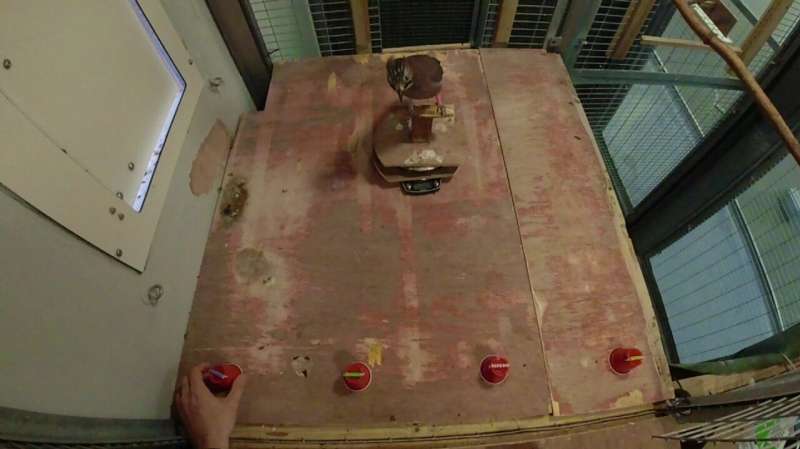
Eurasian jays can remember incidental details of past events, which is characteristic of episodic memory in humans, according to a study published May 15, 2024, in the open-access journal PLOS ONE by James Davies of the University of Cambridge, U.K., and colleagues.
When remembering events, humans have the ability of "mental time travel," consciously reimagining past experiences and potentially recalling details that seemed unimportant at the time. Some researchers have suggested that this " episodic memory " is unique to humans.
In this study, Davies and colleagues ran a memory experiment to test for episodic-like memory in seven Eurasian jays, birds that excel at remembering the location of stored food .
In the experiment, the birds watched food get placed beneath one cup in a line of four identical cups and were then rewarded for correctly selecting the baited cup. Over several trials, the birds were trained to identify the correct cup by remembering its position in line.
Then, during testing, the jays were given an unexpected memory assessment: They watched food get placed beneath one of the cups, which now all had unique visual characteristics, but they were then separated from the cups for 10 minutes while the cups were relocated and rearranged.
Despite the changed positions of the cups and the added time delay, the birds still correctly identified the baited cup according to the visual characteristics 70% of the time.
These results suggest that even though visual differences between the cups were unimportant during training, the birds were able to notice those differences during testing and recall them later, similar to episodic memory in humans.
This study indicates that episodic-like memory might aid jays in finding food stores, and the researchers suggest that future studies might investigate whether the birds can perform similar feats of memory in other non-food-related scenarios.
The authors add, "As the jays were able to remember details that held no specific value or relevance at the time that the memory was created, this suggests that they are able to record, recall, and access incidental information within a remembered event.
"This is an ability that characterizes the type of human memory through which we mentally 'relive' past events (or episodes), known as 'episodic' memory."
Journal information: PLoS ONE
Provided by Public Library of Science
Explore further
Feedback to editors

New deep learning model uses video to measure embryonic development
2 hours ago

Scientists pit primates against smaller-brained mammals to find out who is the smartest forager

Key factors that orchestrate mysterious synchronized coral spawning revealed

New insights into juvenile crown-of-thorns starfish behaviors that threaten reefs

Improved refrigeration could save nearly half of the 1.3 billion tons of food wasted each year globally
4 hours ago

Researchers develop reusable 'sponge' for soaking up marine oil spills—even in chilly northern waters

Novel carbon nanotube yarns can generate electricity from waste heat

The death of Vulcan: Study reveals planet is actually an astronomical illusion caused by stellar activity
5 hours ago

Economists report on a modest intervention that helps low-income families beat the poverty trap

New approach uses 'cloaked' proteins to deliver cancer-killing therapeutics into cells
7 hours ago
Relevant PhysicsForums posts
A dna animation, probability, genetic disorder related.
3 hours ago
Looking For Today's DNA Knowledge
May 27, 2024
Covid Vaccines Reducing Infections
Human sperm, egg cells mass-generated using ips, and now, here comes covid-19 version ba.2, ba.4, ba.5,....
May 25, 2024
More from Biology and Medical
Related Stories

Jays found to be sensitive to cognitive illusions
Aug 18, 2021

Experiments show bottle-nosed dolphins likely have episodic memory recall
Aug 2, 2022

Chickadees have unique neural 'barcodes' for memories of stashing away food
Mar 29, 2024

Neuroscientists find that animals replay incidentally encoded episodic memories
Jan 12, 2024

Research explores why we remember what we remember
Apr 15, 2024

Unlike humans, cuttlefish retain sharp memory of specific events in old age, study finds
Aug 17, 2021
Recommended for you

Small birds boast range of flight styles thanks to evolutionary edge
8 hours ago

How killifish embryos use suspended animation to survive over 8 months of drought
10 hours ago

Study finds fewer invasive alien species on lands of Indigenous Peoples

Secrets of sargassum: Scientists advance knowledge of seaweed causing chaos in the Caribbean and West Africa
Let us know if there is a problem with our content.
Use this form if you have come across a typo, inaccuracy or would like to send an edit request for the content on this page. For general inquiries, please use our contact form . For general feedback, use the public comments section below (please adhere to guidelines ).
Please select the most appropriate category to facilitate processing of your request
Thank you for taking time to provide your feedback to the editors.
Your feedback is important to us. However, we do not guarantee individual replies due to the high volume of messages.
E-mail the story
Your email address is used only to let the recipient know who sent the email. Neither your address nor the recipient's address will be used for any other purpose. The information you enter will appear in your e-mail message and is not retained by Phys.org in any form.
Newsletter sign up
Get weekly and/or daily updates delivered to your inbox. You can unsubscribe at any time and we'll never share your details to third parties.
More information Privacy policy
Donate and enjoy an ad-free experience
We keep our content available to everyone. Consider supporting Science X's mission by getting a premium account.
E-mail newsletter
We have emailed you a PDF version of the article you requested.
Can't find the email?
Please check your spam or junk folder
You can also add [email protected] to your safe senders list to ensure you never miss a message from us.
How Far From Earth Can Humans Travel Into Space?
Complete the form below and we will email you a PDF version
Cancel and go back
IFLScience needs the contact information you provide to us to contact you about our products and services. You may unsubscribe from these communications at any time.
For information on how to unsubscribe, as well as our privacy practices and commitment to protecting your privacy, check out our Privacy Policy
Complete the form below to listen to the audio version of this article
Advertisement
Sign up today to get weekly science coverage direct to your inbox
© 2024 IFLScience. All Rights Reserved
Newsletters in your inbox!
Subscribe today for our Weekly Newsletter in your inbox!
Dr. Alfredo Carpineti
Senior Staff Writer & Space Correspondent
Alfredo (he/him) has a PhD in Astrophysics on galaxy evolution and a Master's in Quantum Fields and Fundamental Forces.
Book View full profile
Book Read IFLScience Editorial Policy
DOWNLOAD PDF VERSION

Space travel as far we currently understand it is complicated. Fer Gregory/Shutterstock.com
As of 2021, Americans James Lovell, Fred Haise, John Swigert are the three people who have traveled furthest from Earth, during the Apollo 13 mission. When they flew behind the Moon, they were 400,171 kilometers (248,655 miles) from the surface of the Earth. Light takes 1.335 seconds to cover that distance.
Many of us have certainly fantasized about going into the stars, or at least exploring the solar system. The feasibility of doing that safely is still slightly out of reach, but we are certainly striding towards further and further forays away from the comfort and safety of our own planet.
Could we reach other planets? Very likely. How about other stars? Maybe one day. What about the end of the universe? There is actually a way that doesn’t require any science fiction solutions (or at least nothing beyond the physics we know.)
Let’s look at the technologies we need to go further deep into space.
The Moon, Mars, and Beyond
If our goal is to explore the solar system, we have a lot of the technology already. There are powerful rockets already in use, and crewed vehicles are being designed to carry humans back to the Moon and beyond – but there are many concerns.
The further we are away from Earth, the higher dose of cosmic radiation we receive. Our planet’s strong magnetic field shields from a good chunk of that. What’s protecting you when you’re going into deep space? Researchers have actually tested a solution. Fungi discovered in Chernobyl survives on radiation, and this could one day be used as a living shielding system on spacecraft and human habitats.
Journeys also would take many months – if not years – and there is a lot of talks of one-way trips. In general, everywhere else in the solar system is an extremely dangerous environment that can easily kill us. While we might reach it, this doesn’t mean we can thrive there. And remember that most medical interventions in space might be extremely difficult to perform.
There’s also the possibility that alien life exists somewhere nearby, so we need to discuss how our presence there might endanger the potential organisms living beyond Earth.
Ad Astra – To The Stars
If you think that all the challenges of “local” space travel can be solved (let’s believe they can for now), maybe you want to turn your attention towards the stars. Could humanity travel to another star system?
Humanity, maybe. A single human, not really. Let’s take Proxima Centauri, the closest star to the Sun. At the speed of light, it takes just over four years to get there. If we were to achieve the speed of the fastest spacecraft ever ( NASA's Parker Solar Probe in its closest approach to the Sun ) it would take almost 8,400 years to get there. And that’s without slowing down to stop it.
There are proposals to send robotic explorations there. Miniature crafts might get there in just a few decades, and larger nuclear-powered ones could do the journey in a few hundred years. Those are very exciting, but they are not suitable for humans. And even if they were, that’s still beyond the human lifespan.
A solution to this might be a generational ship. The first generation would leave our planet and their descendants would reach the star. Obviously, we should wonder why anyone would start this journey. But It’s equally important to discuss the ethical and psychological state that the in-between generations, these interstellar middle children, might be in. Would they be interested in keep going towards something they would never see?
Getting Close To The Speed Of Light
Can we make it faster? And could we reach nearby galaxies and beyond too? Well, at least in principle yes. What you would need is a relativistic rocket . This would allow a handful of humans to travel incredible distances, and it doesn’t require anything beyond our current understanding of physics.
You need a rocket that is accelerated by about 9.81 meters per second squared. That’s the average Earth-normal pull, so people in the spacecraft would feel like they are simply standing on the surface of our planet. Such an acceleration would quickly bring the spacecraft to relativistic speed and there a very useful phenomenon takes place: time dilation.
Getting close to the speed of light, the passage of time on the spacecraft will slow down. This quirk of physics was popularized in the twin paradox, and in this relativistic rocket, you are the twin that flies away and doesn’t age.
The clock outside would still be ticking. So, you could reach Proxima Centauri in 4.3 years, but on-board it would feel like 3.6 years. If you instead wanted to go Vega (27 light-years away), on board, it would feel like 6.6. The further you go the closer you’d be to the speed of light, and the slower time will pass.
Journey to the edge of the universe
So you could get to the center of the Milky Way in 20 years or to the Andromeda Galaxy – located over two million light-years away – in a merely 28. Obviously, two million years would have passed on Earth.
But there is a limit to how far we could go? Yes. The universe is expanding and this expansion is accelerated. The space between galaxies (unless they are very close) gets wider and wider with every passing second. And the further two things are in the universe the faster they appear to recede from each other.
There are galaxies that we see in the sky that we can no longer reach because the only way to do so would be to move faster than the speed of light to make up for the accelerated expansion of the universe. This border is called the cosmological horizon, and its exact size depends on the correct cosmological formula to describe the universe… which is currently a work in progress .
Still, it could be possible to reach this boundary in a few decades. An empty, cold, and unmarked border in the universe. So why don’t we have such a rocket? Well, fuel is the reason. To sustain such a constant acceleration requires a huge amount of fuel. Even imagining an extremely efficient reaction (that we don’t have), you ought to carry a lot of fuel with you. Like, a planet-size worth of fuel.
The moral of the story is that space travel as far we currently understand it is complicated. We have so many challenges to deal with, whether they are technical, physical, physiological, psychological, and ethical. How we approach them could make all the difference.
THIS WEEK IN IFLSCIENCE
Article posted in, more space and physics stories.
link to article

NASA Astronaut Reveals You Have To Pass The Pee And Poop Test If You Want To Go To Space

Are Those Eerie Oversized Black Holes In The Early Universe The Result Of Direct Collapse?

Supermassive Black Holes Can Fire Powerful Beams – And Drastically Change Their Aim

Why Does The Heart Symbol Look Nothing Like A Real Heart?

Point Nemo: The Voyage To The Oceanic Pole Of Inaccessibility

What Are Virgin Births?
Advertisement
Supported by
What to Know About the I.C.C. Prosecutor’s Request for Warrants for Israeli and Hamas Leaders
The International Criminal Court prosecutor requested arrest warrants for Prime Minister Benjamin Netanyahu of Israel and Hamas leaders. Here is a closer look at the court and the warrant.
- Share full article

By Emma Bubola and Charlie Savage
The prosecutor of the International Criminal Court said on Monday that he had requested arrest warrants for war crimes and crimes against humanity for Prime Minister Benjamin Netanyahu of Israel and the leaders of Hamas. Here’s a closer look at the court and the warrants.
The prosecutor is accusing both sides of war crimes.
The court’s prosecutor, Karim Khan, said in a statement that he was applying for arrest warrants for Yahya Sinwar, Mohammed Deif and Ismail Haniyeh of Hamas because he had “reasonable grounds to believe” that they were responsible for war crimes and crimes against humanity, which included “the killing of hundreds of Israeli civilians” in the Hamas-led Oct. 7 attacks in Israel, and the taking of at least 245 hostages.
Mr. Khan said that the Hamas officials “planned and instigated the commission of crimes” on that day, and that they “have acknowledged their responsibility for those crimes” through their actions, such as personal visits to hostages shortly after their kidnapping.
The prosecutor cited accusations of murder, extermination, hostage-taking, and acts of sexual violence as war crimes. He also said he had reasonable grounds to believe the officials were responsible for acts of torture and cruel treatment.
Mr. Khan also said that he had requested arrest warrants for Mr. Netanyahu and Israel’s defense minister, Yoav Gallant, because there were reasonable grounds to believe that they bore responsibility for war crimes and crimes against humanity, including the starvation of civilians as a weapon of war and “intentionally directing attacks against a civilian population.”
Mr. Khan said that these crimes were committed “as part of a widespread and systematic attack against the Palestinian civilian population.” He also said that in his office’s view, some of the crimes “continue to this day.”
“International law and the laws of armed conflict apply to all,” he said. “No foot soldier, no commander, no civilian leader — no one — can act with impunity. Nothing can justify willfully depriving human beings, including so many women and children, the basic necessities required for life. Nothing can justify the taking of hostages or the targeting of civilians.”
The International Criminal Court was set up under a 1998 treaty, but the U.S. and Israel aren’t members.
The International Criminal Court is an international court that has jurisdiction to prosecute people for war crimes, genocide and crimes against humanity.
It was established in 2002 as a standing body to investigate those crimes under a 1998 treaty known as the Rome Statute. Previously, the United Nations Security Council had set up ad hoc tribunals to address atrocities in specific places, like the former Yugoslavia and Rwanda.
The I.C.C. is based in The Hague, a Dutch city that has long been a center for international law and justice. It is separate from the International Court of Justice, an international tribunal also in The Hague which is an arm of the United Nations and handles civil disputes between countries. The latter is currently weighing a claim brought by South Africa that Israel is conducting a genocide in Gaza . Israel has strongly denied the accusation.
Many democracies joined the International Criminal Court, including close American allies like Britain. The court has recognized Palestine as a member since 2015.
But neither Israel nor the United States is a member. The United States, which conducts numerous military operations abroad, has taken the position that the court should not exercise jurisdiction over citizens from countries that are not parties to the treaty.
That position, however, has been tested by Russia’s invasion of Ukraine. Russia is not a member, but Ukraine is. Last year, the court issued arrest warrants for President Vladimir V. Putin and another Russian official, saying they bore individual criminal responsibility for the abduction and deportation of Ukrainian children in the wake of Russia’s full-scale invasion of Ukraine in 2022. After a lengthy internal debate, President Biden ordered the U.S. government to share evidence of Russian war crimes with the court.
The arrest warrants have the immediate effect of limiting travel for targets.
Mr. Khan’s request for warrants must still be approved by judges on the court. If they are issued, the warrants would put both the Israeli officials and Hamas leaders at risk of being arrested and sent to The Hague for trial if they travel to one of the court’s 124 member nations , which include most European countries.
Presumably they would not go to countries that would arrest and extradite them, in which case they may never stand trial. But the effective travel restrictions would function as a kind of punishment in and of themselves.
“Israel will be more isolated after this action,” said Stephen Rapp, a former U.S. ambassador at large who headed the Office of Global Criminal Justice in the State Department. He said that if the arrest warrants go ahead, the named officials “will find it hard to travel to two-thirds of the world.”
The warrant request represents one of the harshest condemnations of Israel’s strategy in its war against Hamas and its campaign’s toll on Gaza’s civilian population. But Mr. Rapp said that Israel “has proved itself sort of immune to international pressure, ” and it was unclear whether the prosecutor’s actions would have an impact on its strategy in Gaza.
The I.C.C. cannot try defendants in absentia . It also has no police force, relying on member states to arrest fugitives and transfer them to The Hague.
In the case of Mr. Putin, the judges approved the request within weeks.
The prosecutor is accusing Israeli officials of intentionally targeting civilians and using starvation as a weapon.
Mr. Khan said that he believed Israeli officials were responsible for intentionally attacking civilians, but he largely focused on allegations of starvation, and extermination or murder “including in the context of deaths caused by starvation.”
For months, Israel has been criticized for the scale of civilian deaths, but Israeli officials have blamed Hamas for the toll, accusing the armed group of using civilians as a shield, its fighters deliberately hiding among and beneath noncombatants.
Under the laws of war, it can be lawful to pull the trigger knowing that some civilian bystanders are likely to be killed, so long as the harm to innocents is deemed to be necessary and proportionate to striking a legitimate military target.
Mr. Rapp, the former U.S. ambassador, said that prosecutors’ greater emphasis on accusations that Israeli officials have restricted the transfer of critical supplies of food and medicine to civilians may be because that issue is “relatively simple” compared to second-guessing targeting decisions.
“The humanitarian rules are very strict,” he said, adding that a state which conducts a military operation in an area of which it controls the perimeter must ensure that civilians have the means of survival.
“If you look at the black letter of international law in this area, it is actually very, very clear,” he said.
Israel’s foreign minister denounced the warrant applications.
Neither Mr. Netanyahu nor Mr. Gallant immediately commented on the decision.
Israel’s foreign minister, Israel Katz, said that he had ordered the immediate establishment of a special committee aimed at fighting the decision, which he said “was intended first and foremost to tie the hands of the State of Israel and deny it the right of self-defense.”
The “scandalous” prosecutor’s decision, he said, “is a frontal attack without restraint on the victims of Oct. 7 and our 128 hostages in Gaza.”
In a statement on Telegram, Hamas condemned the warrant requests against its leaders. It said that the prosecutor should demand the arrest not only of Mr. Netanyahu and Mr. Gallant but of all “leaders, officers and soldiers who participated in crimes against the Palestinian people.”
Because of an editing error, an earlier version of this article said that the United States and Israel hadn’t signed the treaty that set up the International Criminal Court. They signed, but are not members.
How we handle corrections
Emma Bubola is a Times reporter based in London, covering news across Europe and around the world. More about Emma Bubola
Charlie Savage writes about national security and legal policy. More about Charlie Savage
Our Coverage of the Israel-Hamas War
News and Analysis
Israel’s military said its troops were pressing on with their ground assault of Rafah , even as international outrage over its operation there intensified in the wake of a deadly airstrike on a camp for displaced Palestinians.
The temporary pier that the U.S. military constructed and put in place to provide much-needed humanitarian aid for Gaza has broken apart in rough seas , the Pentagon said.
Spain, Norway and Ireland formally recognized an independent Palestinian state . The previously announced moves by the three European nations are largely symbolic , but serve as a rebuke to Israel.
U.S. Military Aid Project: The Pentagon predicted that a stream of humanitarian aid would be arriving in Gaza via the floating pier, but little relief has reached the besieged strip .
Ari Emanuel’s Condemnation: The media executive condemned Netanyahu for his leadership since the Hamas attack of Oct. 7, a conspicuous statement from one of Hollywood’s most powerful figures.
Amal Clooney Weighs In: The prominent human rights lawyer was on a panel that recommended arrest warrants for leaders of Israel and Hamas. She had been criticized earlier for not speaking out on the war.
Eurasian jays can use 'mental time travel' like humans, study finds
Study finds jays remember incidental details, similar to episodic memory in humans.
Eurasian jays can remember incidental details of past events, which is characteristic of episodic memory in humans, according to a study published May 15, 2024, in the open-access journal PLOS ONE by James Davies of the University of Cambridge, UK and colleagues.
When remembering events, humans have the ability of "mental time travel," consciously reimagining past experiences and potentially recalling details that seemed unimportant at the time. Some researchers have suggested that this "episodic memory" is unique to humans. In this study, Davies and colleagues ran a memory experiment to test for episodic-like memory in seven Eurasian jays, birds that excel at remembering the location of stored food.
In the experiment, the birds watched food get placed beneath one cup in a line of four identical cups and were then rewarded for correctly selecting the baited cup. Over several trials, the birds were trained to identify the correct cup by remembering its position in line. Then, at test, the jays were given an unexpected memory assessment: they watched food get placed beneath one of the cups, which now all had unique visual characteristics, but they were then separated from the cups for 10 minutes while the cups were relocated and rearranged. Despite the changed positions of the cups and the added time delay, the birds still correctly identified the baited cup according to their visual characteristics 70% of the time.
These results suggest that even though visual differences between the cups were unimportant during training, the birds were able to notice those differences at test and recall them later, similar to episodic memory in humans. This study indicates that episodic-like memory might aid jays in finding food stores, and the researchers suggest that future studies might investigate whether the birds can perform similar feats of memory in other non-food-related scenarios.
The authors add: "As the jays were able to remember details that held no specific value or relevance at the time that the memory was created, this suggests that they are able to record, recall, and access incidental information within a remembered event. This is an ability that characterises the type of human memory through which we mentally 'relive' past events (or episodes ), known as 'episodic' memory."
- Intelligence
- Educational Psychology
- Animal Learning and Intelligence
- Canada Lynx
- Jane Goodall
- Memory-prediction framework
- Memory bias
- Limbic system
- Philosophy of mind
Story Source:
Materials provided by PLOS . Note: Content may be edited for style and length.
Journal Reference :
- James R. Davies, Elias Garcia-Pelegrin, Nicola S. Clayton. Eurasian jays (Garrulus glandarius) show episodic-like memory through the incidental encoding of information . PLOS ONE , 2024; 19 (5): e0301298 DOI: 10.1371/journal.pone.0301298
Cite This Page :
Explore More
- Cold Supply Chains for Food: Huge Savings
- Genetic Mosaicism More Common Than Thought
- How Killifish Embryos Survive 8 Month Drought
- Simple Food Swaps to Cut Greenhouse Gases
- Fossil Porcupine in a Prickly Dilemma
- Future Climate Impacts Put Whale Diet at Risk
- Charge Your Laptop in a Minute?
- Caterpillars Detect Predators by Electricity
- 'Electronic Spider Silk' Printed On Human Skin
- Engineered Surfaces Made to Shed Heat
Trending Topics
Strange & offbeat.

IMAGES
VIDEO
COMMENTS
Travel entails wishful thinking. It demands a leap of faith, and of imagination, to board a plane for some faraway land, hoping, wishing, for a taste of the ineffable. Travel is one of the few ...
Another reason why people love to travel: it helps open your mind. You realize that there's no one way to live life. Meeting people from other places will show you that your world view isn't the same as everyone else's. You can't imagine how different life is in another place until you see for yourself.
Humans have an inherent curiosity that drives them to explore and experience new things. This curiosity plays a vital role in why humans like to travel. Exploring new places, immersing themselves in different cultures, and gaining new perspectives are all aspects of travel that satisfy this curiosity and desire for new experiences. One of the ...
By rejecting alcohol, you reject something very human, an extra limb that we have collectively grown to deal with reality and with each… 10 min read · Jan 21, 2024 895
Young people are seeking more human connection in the post-lockdown era, so they're embracing small-group travel. Modern technology and social media apps have created a hyper-connected world, but ...
Travel as a Transforming Experience. The annual vacation in an unfamiliar place can have beneficial psychological effects. These are many and varied. By changing the environment, a person puts ...
Called the "Ebay for space" by Time Magazine, Airbnb is an online marketplace allowing anyone from private residents to commercial properties to rent out their extra space. The reputation-based site allows for user reviews, verification, and secure online transactions. Listings include vacation rentals, private rooms, entire apartments, bed ...
Temperatures on Mars can range from -284 degrees F to 86 degrees F. The atmosphere on Mars is 96% carbon dioxide. One day on Mars lasts about 37 minutes longer than an Earth day. A year on Mars is almost twice as long as a year on Earth. Gravity on Mars is about one-third of the gravity on Earth.
Kind Human facilitates immersive experiences in remote communities, and one-of-a-kind expeditions exploring the shared roots of humankind. Our pilot project was born in collaboration with the people of Choquecancha, an isolated village sitting on an archaeological site in Peru's Lares Valley, a couple of hours away from the more famous Sacred Valley and almost on the edge of the Amazon ...
People who see animals as people and assign human traits to non-human objects are more likely to travel to destinations that are presented as being human-like, according to research. A study has ...
Here's some reasons why people travel and also why it's good for them. 1. Traveling is a great way to get out of your comfort zone and experience new things. The act of leaving everything you know and are familiar with and going someplace completely new is a bit like taking on a whole new challenge. It's exciting and fascinating to see how ...
Travel Like a Human. Mountains covered with fresh green, rural landscape that reflects the contrast between green and blue, beautiful autumn leaves and snowy landscape, townscape preserving the culture of the Muromachi period called "Hida No Takumi", vegetables grown in pure water, Hida beef, local sake.
Space exploration unites the world to inspire the next generation, make ground-breaking discoveries, and create new opportunities. Technologies and missions we develop for human spaceflight have thousands of applications on Earth, boosting the economy, creating new career paths, and advancing everyday technologies all around us.
1900s. The 1900s was all about that horse-and-carriage travel life. Horse-drawn carriages were the most popular mode of transport, as it was before cars came onto the scene. In fact, roadways were ...
The Global Voice for Travel & Events. About. About WBTW; Behind the Scenes; Writers; Write For Us; Destinations. By Region
Cairo is one of the best travel destinations for projectors. Travelers with this human design type would do well on a group tour of the major attractions, like the Pyramids of Giza, to harness ...
A human travel agent may ask a series of questions to understand a client's needs. So can generative AI, which picks up on keywords. Mindtrip, an AI planner launched publicly on May 1, has an ...
One skull (but only one of several) from Omo Kibish looks much like a modern human at 195,000 years old, while another found in Nigeria's Iwo Eleru cave, appears very archaic, but is only 13,000 ...
Travel Like a Human ? Welcome to Kitashinshu, IIYAMA and Kijimadaira Our hostel locates near of Iiyama in the northern part of Nagano, called, Kitashinshu(Hitoric name of North Nagano). It is about 30km north from Nagano city, where the winter Olympic Games held in 1998.
Updated on: May 23, 2024 / 10:57 AM EDT / MoneyWatch. Bark Air, a new airline that puts dogs before their human companions, will take its first flight Thursday. Its sold-out maiden voyage will ...
Scientists find Eurasian jays can use 'mental time travel' like humans. Jaylo the jay watching as food is put in the cup with the blue string in the encoding phase. Credit: James Davies, CC-BY ...
Travel Like Human. 257 likes. What makes a place beautiful is not because of the views, it is because of the people. 風景再美都不及人兒美。:) |旅行的故事.我與當地人.難忘的回憶|
So, you could reach Proxima Centauri in 4.3 years, but on-board it would feel like 3.6 years. If you instead wanted to go Vega (27 light-years away), on board, it would feel like 6.6.
How many refugees are there around the world? At least 108.4 million people around the world have been forced to flee their homes. Among them are nearly 35.3 million refugees, around 41 per cent of whom are under the age of 18.. There are also millions of stateless people, who have been denied a nationality and lack access to basic rights such as education, health care, employment and freedom ...
This aspect of episodic memory is sometimes referred to as "mental time travel.". To find out whether Eurasian jays are capable of mental time travel, the researchers worked with birds that ...
In a statement on Telegram, Hamas condemned the warrant requests against its leaders. It said that the prosecutor should demand the arrest not only of Mr. Netanyahu and Mr. Gallant but of all ...
Eurasian jays can use 'mental time travel' like humans, study finds. ScienceDaily . Retrieved May 24, 2024 from www.sciencedaily.com / releases / 2024 / 05 / 240515164232.htm